Why should the Dordogne villages be on your travel list?
Here, history isn’t just in the books; it’s in the winding streets, ancient homes, and lively markets that define the heart of rural France.
The region paints a dreamy picture of picturesque rural France with idyllic rustic farmhouses and creamy stone houses nestled among rolling green hills of the Dordogne Valley.
Medieval castles punctuate the landscape, and life syncs with the leisurely pace of its rivers and streams.
Having called the Dordogne home for nine months, we effortlessly adapted to French village life in a charming hamlet called Villars (pronounced Vill-arr).
This experience allowed us to fully immerse ourselves in the tranquil rhythms of French countryside living, providing us with an authentic glimpse into the Dordogne lifestyle and a chance to explore the best villages in the Dordogne.
Join us as we explore our top 12 Dordogne villages and discover what makes each one uniquely enchanting as they vie for the title of the most beautiful town in Dordogne.
Quick Overview: Best Villages in Dordogne
Map of Dordogne Villages in Perigord, France
How to Use This Dordogne Villages Route Map
- To use this interactive map effectively, click the square icon in the upper right corner to expand.
- A key will appear on the left, guiding you through various locations.
- Clicking on any site reveals detailed information about that spot.
- Each Dordogne village is highlighted as a Purple marker (🟣).
- Attractions are highlighted with a Green marker (🟢).
Travelling in the Dordogne: What’s in this Guide
We’ve included the best Dordogne villages and organised them into the perfect travel route, from 1 to 12, ensuring you experience each one at its best.
For each stop, we’ve handpicked the top accommodation options based on customer reviews.
Plus, we’ve included a guide to local events and happenings throughout the year.
Use the links below to jump to specific sections of the article.
- Explore the Best Villages in Dordogne, France: Discover our top picks for must-visit villages in this picturesque region.
- Where is the Dordogne? Learn more about where Dordogne is situated and its geographical highlights.
- Dordogne Villages FAQs: Get answers to frequently asked questions about visiting the villages in Dordogne.
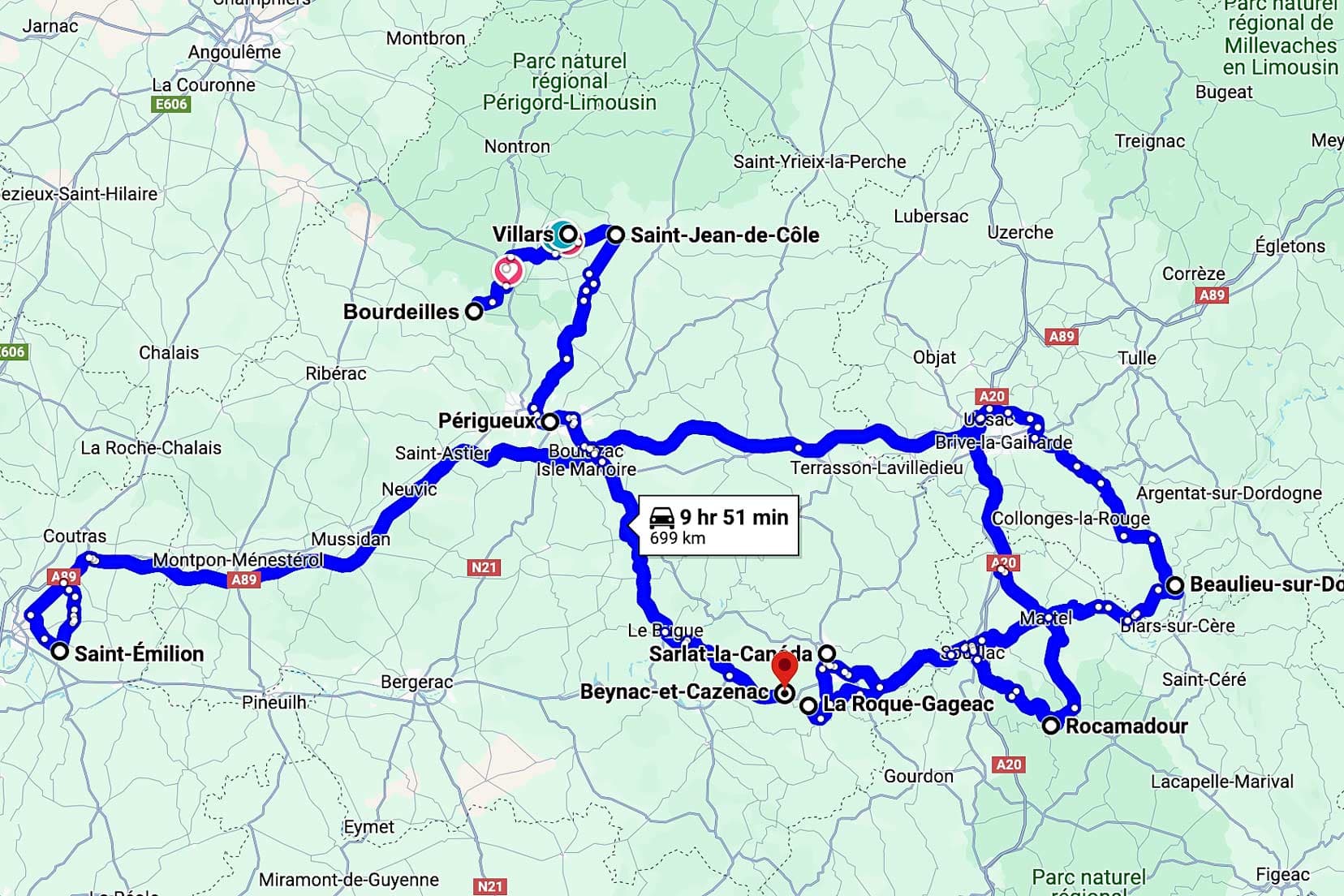
Planning a trip to the Dordogne region?
If you’re considering a road trip through France, our comprehensive guide to motorhoming in France can help you prepare.
Planning a Trip to France?
- 🚗 Hiring a car? We recommend getting a quote from DiscoverCars
- 🚐 Hiring a campervan? We recommend Motorhome Republic
- ⛑ Arranged your travel insurance? Compare quotes from World Nomads & Safetywing
- 🪪 Order your International Driver’s Licence online here
- 🏩 Booked your accommodation? We use Booking.com to find the best deals
- 🐾 Is someone pet-sitting for you? 🐾 We use and love TrustedHousesitters
- (Get 25% off at checkout for new memberships with our discount code: LIFEJOURNEY25)
Delightful Dordogne Villages and Towns to Visit
If you love castles, Dordogne is a must-visit, with hundreds waiting to be explored. The medieval cliff-side villages of La Roque-Gageac, Beynac-et-Cazenac, and Rocamadour are architectural wonders, offering breathtaking views of the countryside.
A visit to Dordogne isn’t complete without exploring at least one of its markets. With numerous options throughout Perigord, France, on different days of the week, you’re spoilt for choice.
From medieval castles and charming market squares to the tranquil Dordogne River, this delightful region has something for everyone.
🗓️ For help planning your travel itineraries, our printable road trip planner might be just what you need to organise your upcoming trip. ➡️ Sign up for this free 23-page planner here.
1. Bourdeilles
Bourdeilles is a small medieval town situated on the Dronne, a northern Dordogne River. The two main attractions here are the Chateau de Bourdeille and Bourdeilles’ charming stone bridge.
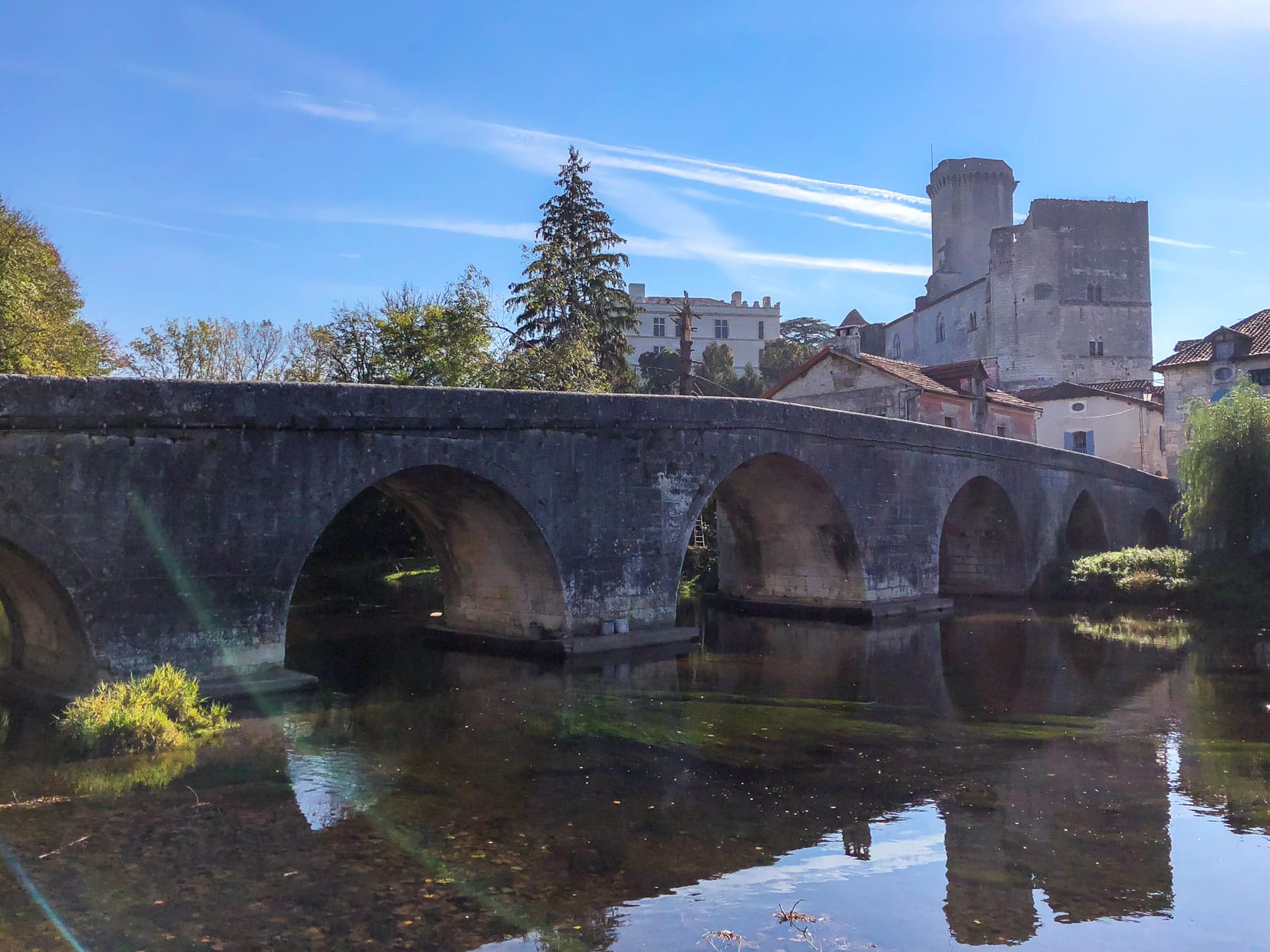
This interestingly designed bridge was originally built in the 14th century but had to be rebuilt in the 18th century following severe floods.
The Bourdeille Bridge is extremely picturesque, and visited quite a few times to wander around the town when we lived nearby.
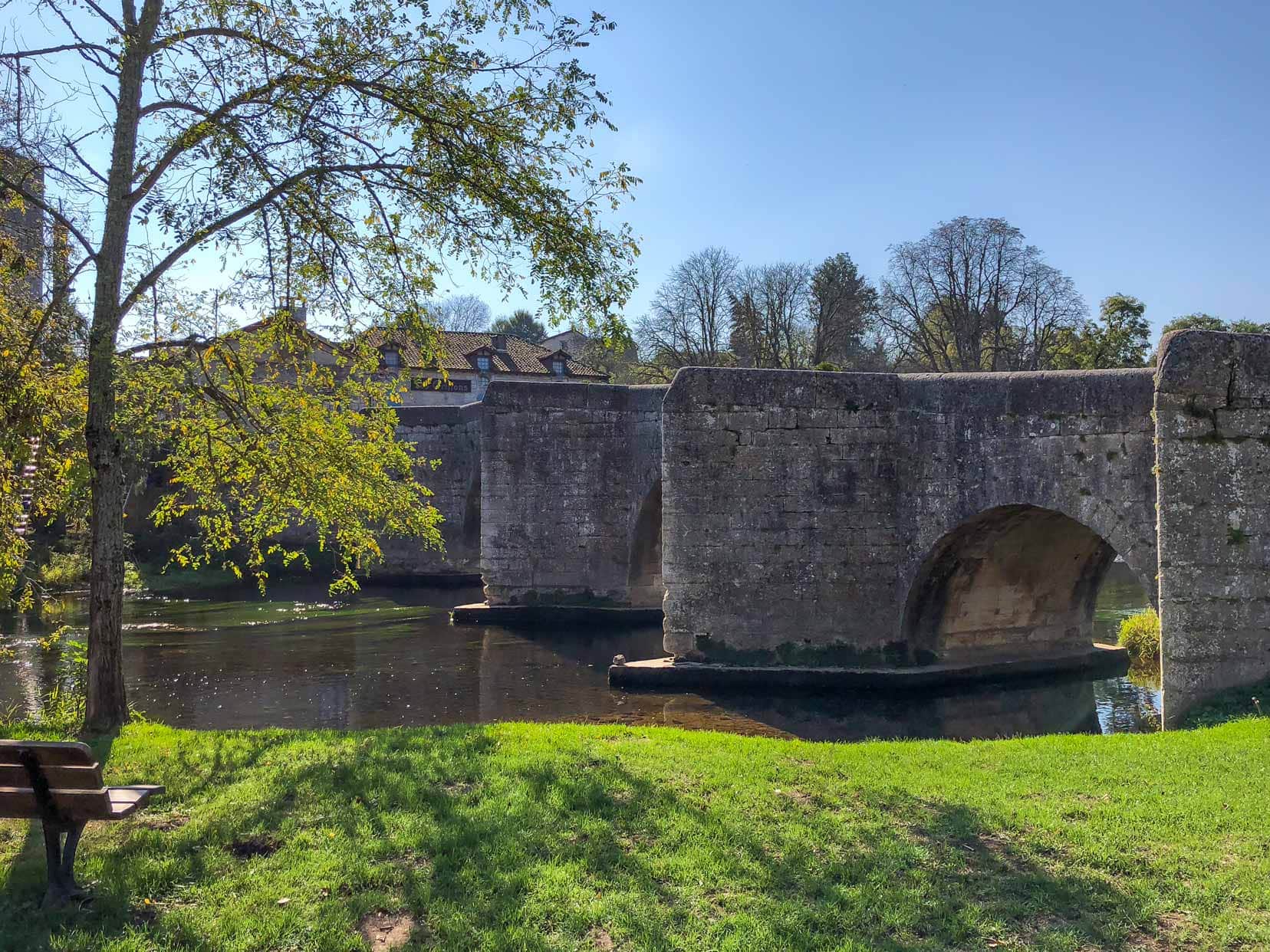
The bridge isn’t not only has an unusual shape, but as the river flows under it, swathes of emerald green mossy plants dance with the river’s flow—it’s like a moving watercolour painting.
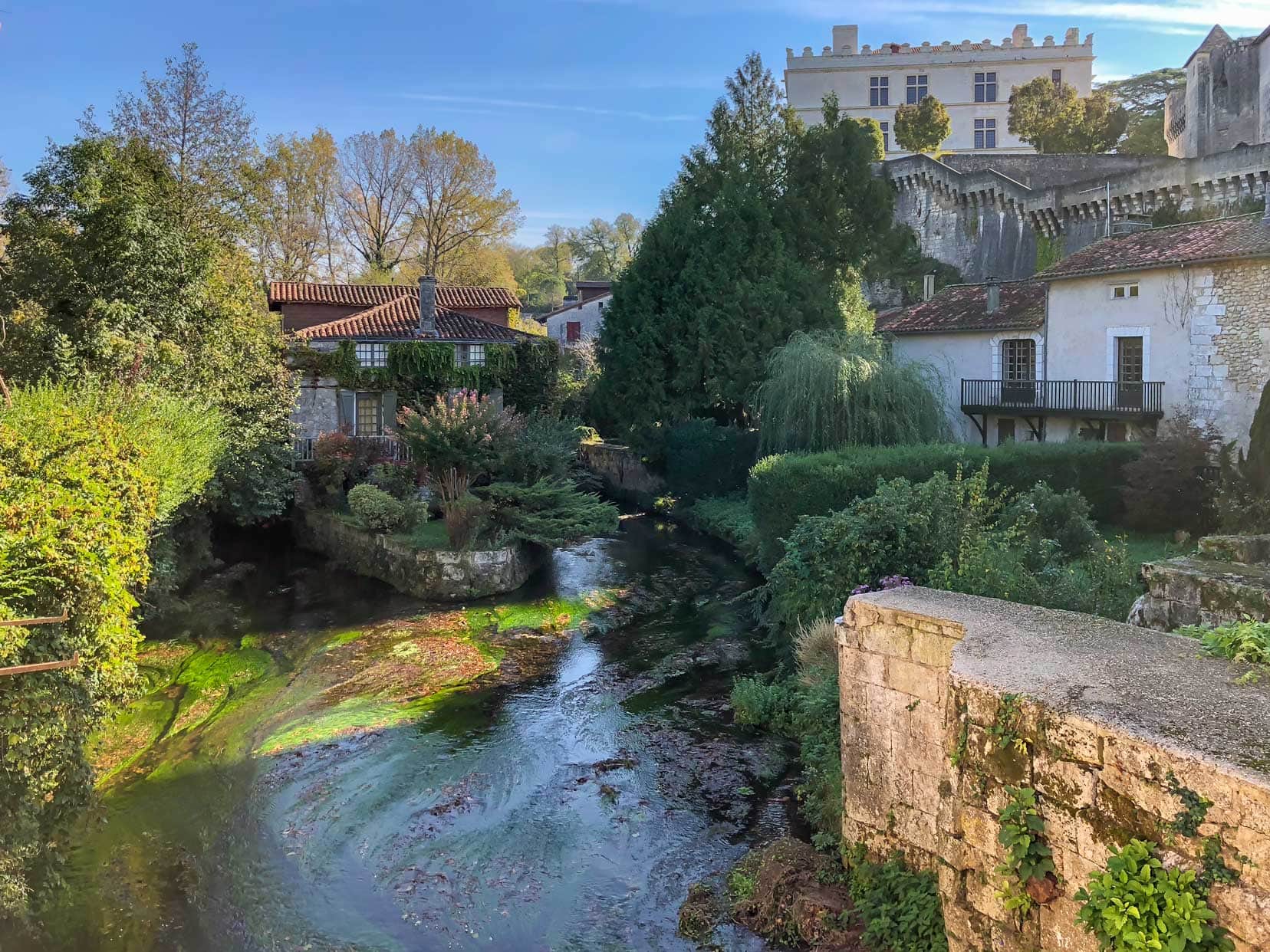
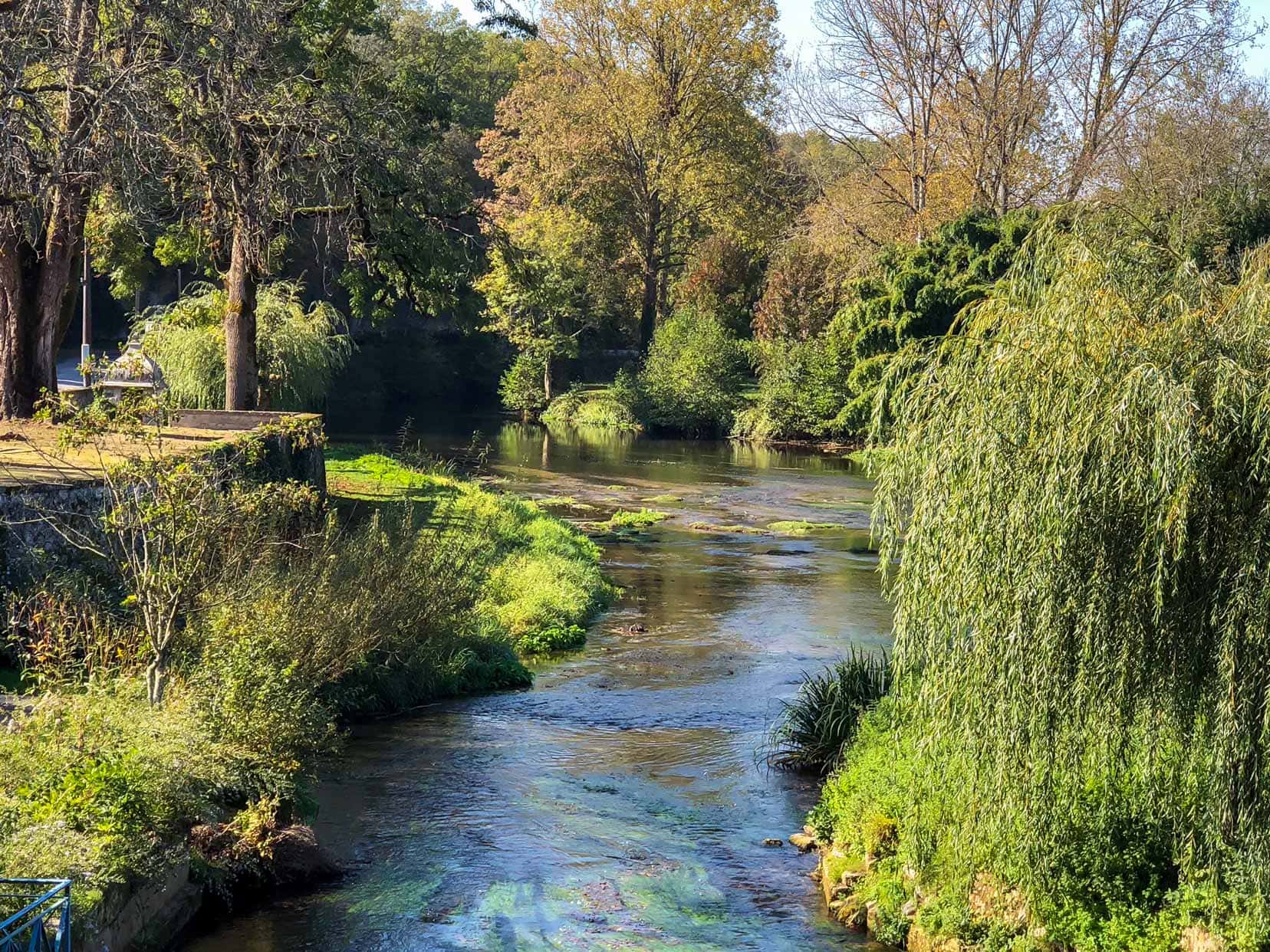
The Bourdeilles Chateau, built on a rocky outcrop at the top of the town, is listed as a historical monument and dates back to the 12th century. Unfortunately, it was closed when we were there, but you can access its small gardens.
A great viewpoint over the river is at the top of the village.
🎊 What’s On – Bourdeilles
Bourdeilles hosts a variety of events and markets throughout the year:
- Carnival: Kick-off March by attending the carnival on the first weekend. Don’t miss the parade!
- Annual Festival: Join the local festivities on the first weekend of August. The schedule includes a parade and a range of activities for everyone.
- Bastille Day: Celebrate on the 14th of July with traditional French festivities.
- Market Day: Visit the local market every Sunday morning to enjoy fresh produce and local goods.
⭐️ Bourdeilles Accommodation: Hostellerie Les Griffons
Rating: Fabulous | Wifi | Breakfast available | 🦭 Check Rates and Availability
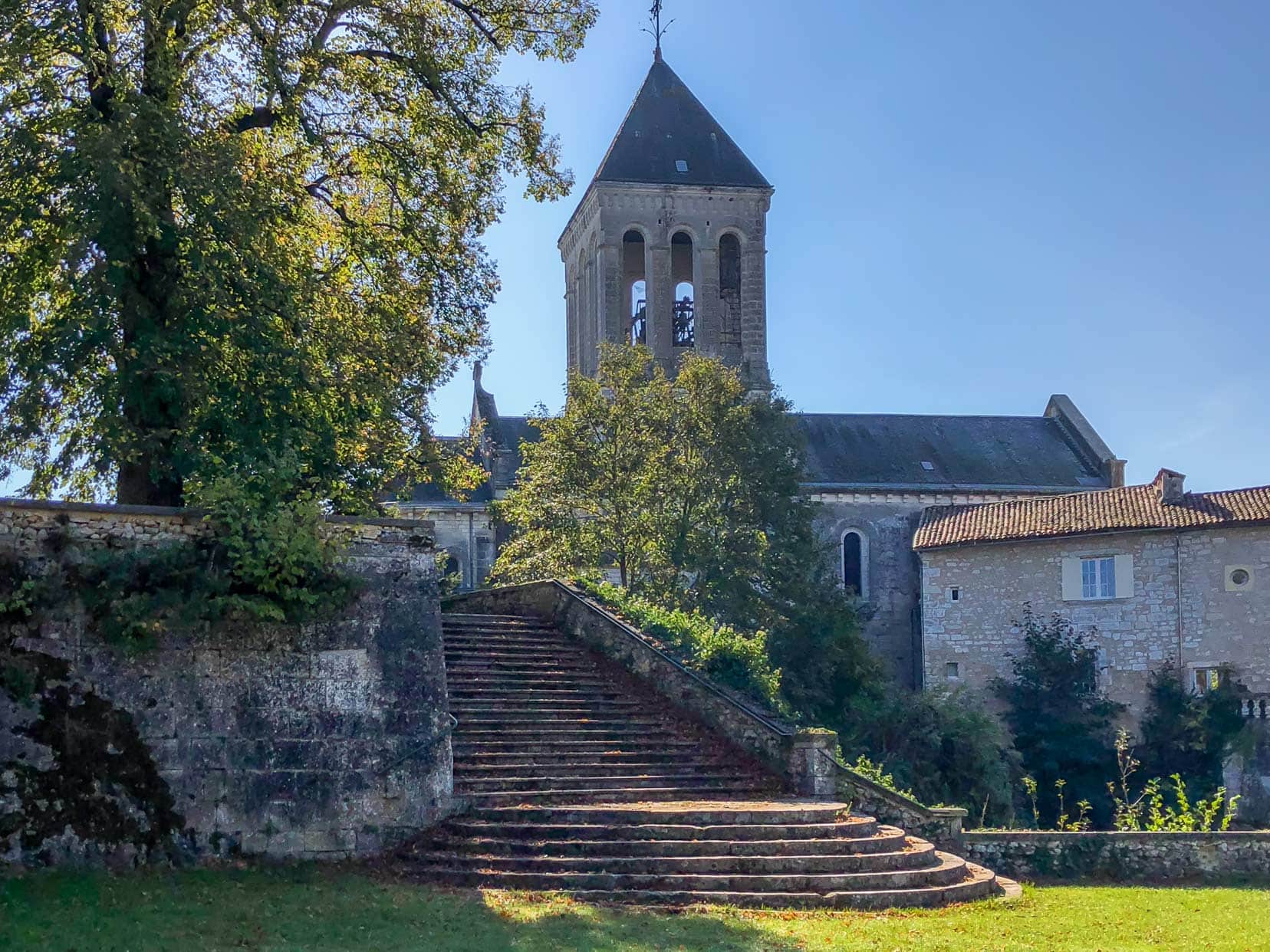
2. Brântome
🚗 Driving Distance: Bourdeilles to Brântome is 10km or approx. 12 mins.
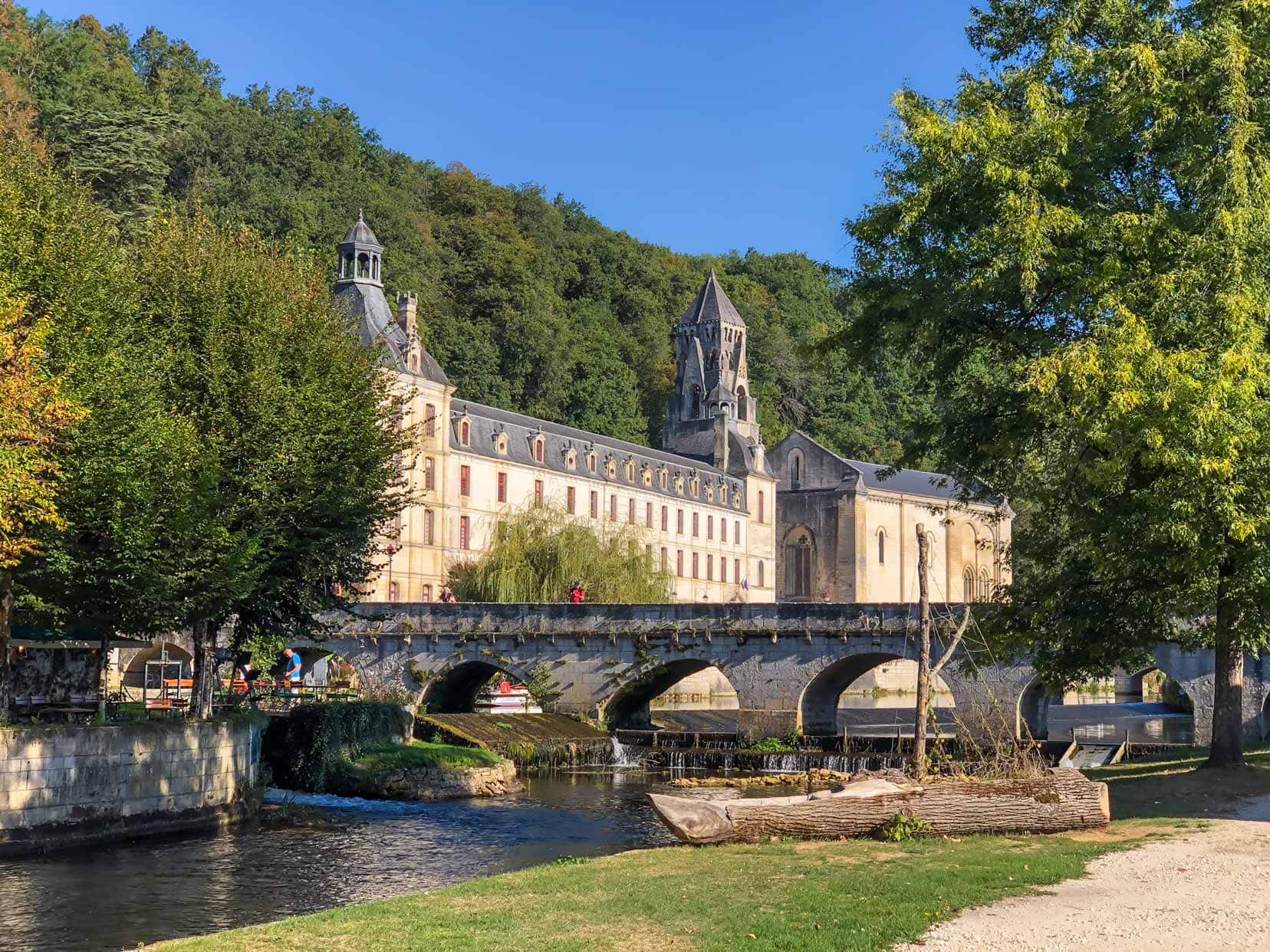
Brântome has to be one of the most photogenic and prettiest villages in Dordogne.
The Dronne River flows through its centre, and the Benedictine Abbey, Brantome Abbey, flanked by wooded slopes, looks on grandly.

A charming old stone bridge crosses the river beside an old working mill (now a restaurant) that adds to this idyllic picture.
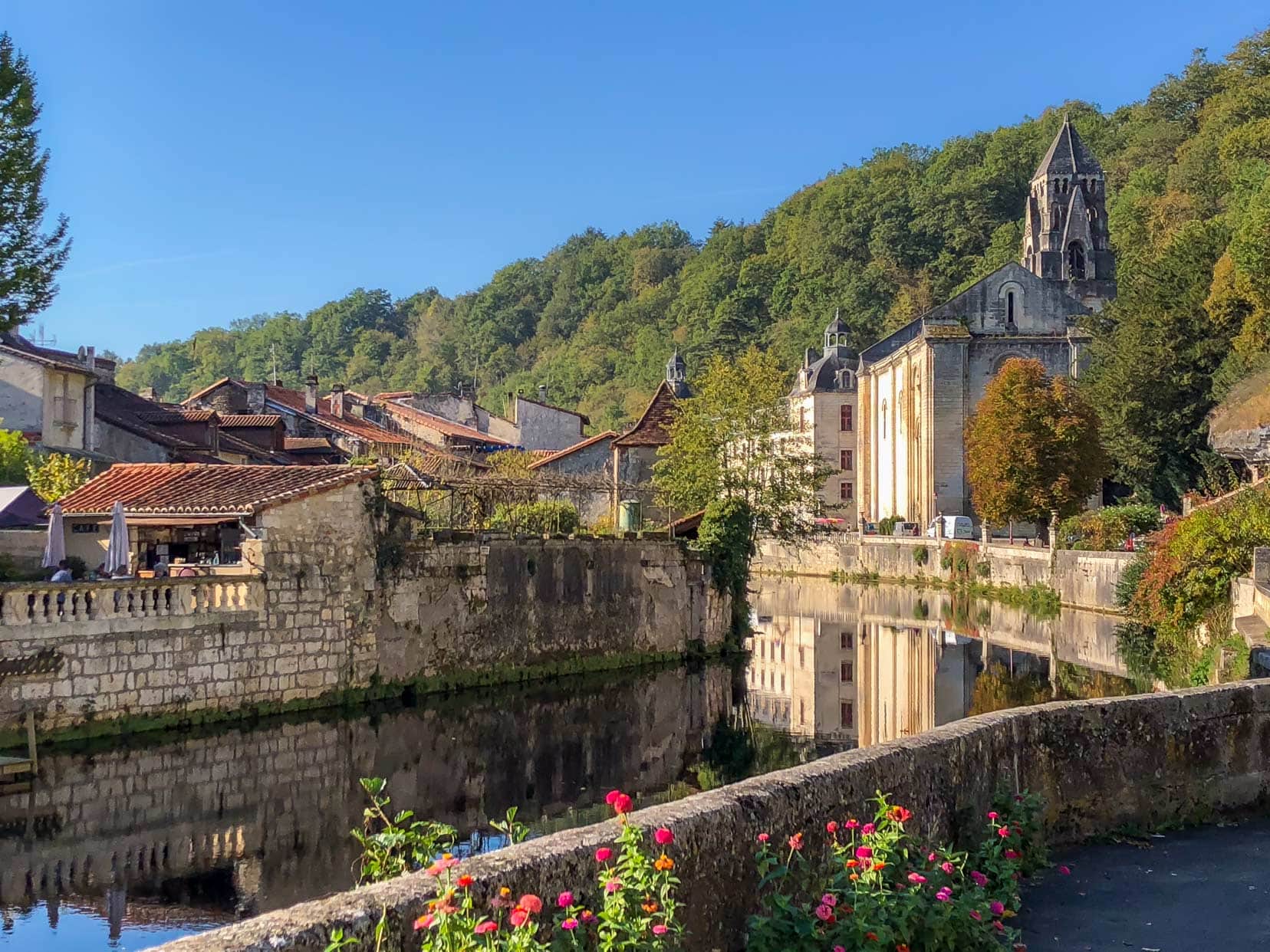
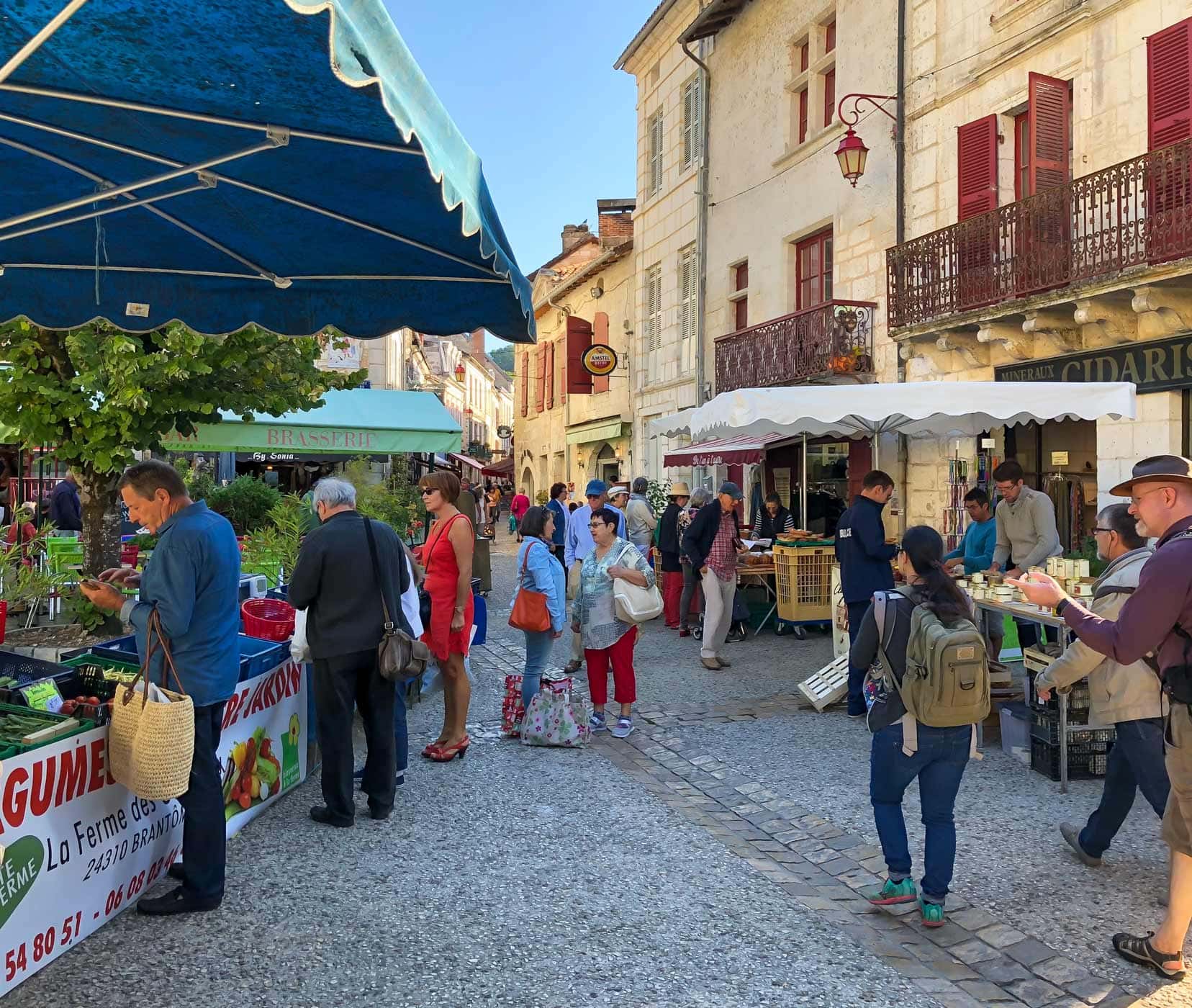
A local market is held here every Friday, and Brantome is filled with traditional French cuisine and the colours of the Perigord.
Local foods of le Perigord France include paté de foie gras, walnuts and truffles. Depending on the season, you’ll likely see many chestnuts for sale, which grow prolifically in the region. And, of course, the classic French strings of garlic.
You can walk alongside the river between weeping willows and catch glimpses of the brightly coloured quintessential French shutters on the grey stone houses along the river.
🎊 What’s On – Brântome
- Weekly Markets: Visit the market every Friday morning. Additionally, from mid-June to mid-September, there’s a Farmers Country Market every Tuesday from 8 AM to 1 PM.
⭐️ Brantome Accommodation: Moulin de l’Abbaye
Rating: Superb | Wifi | Breakfast | 🦭 Check Rates and Availability
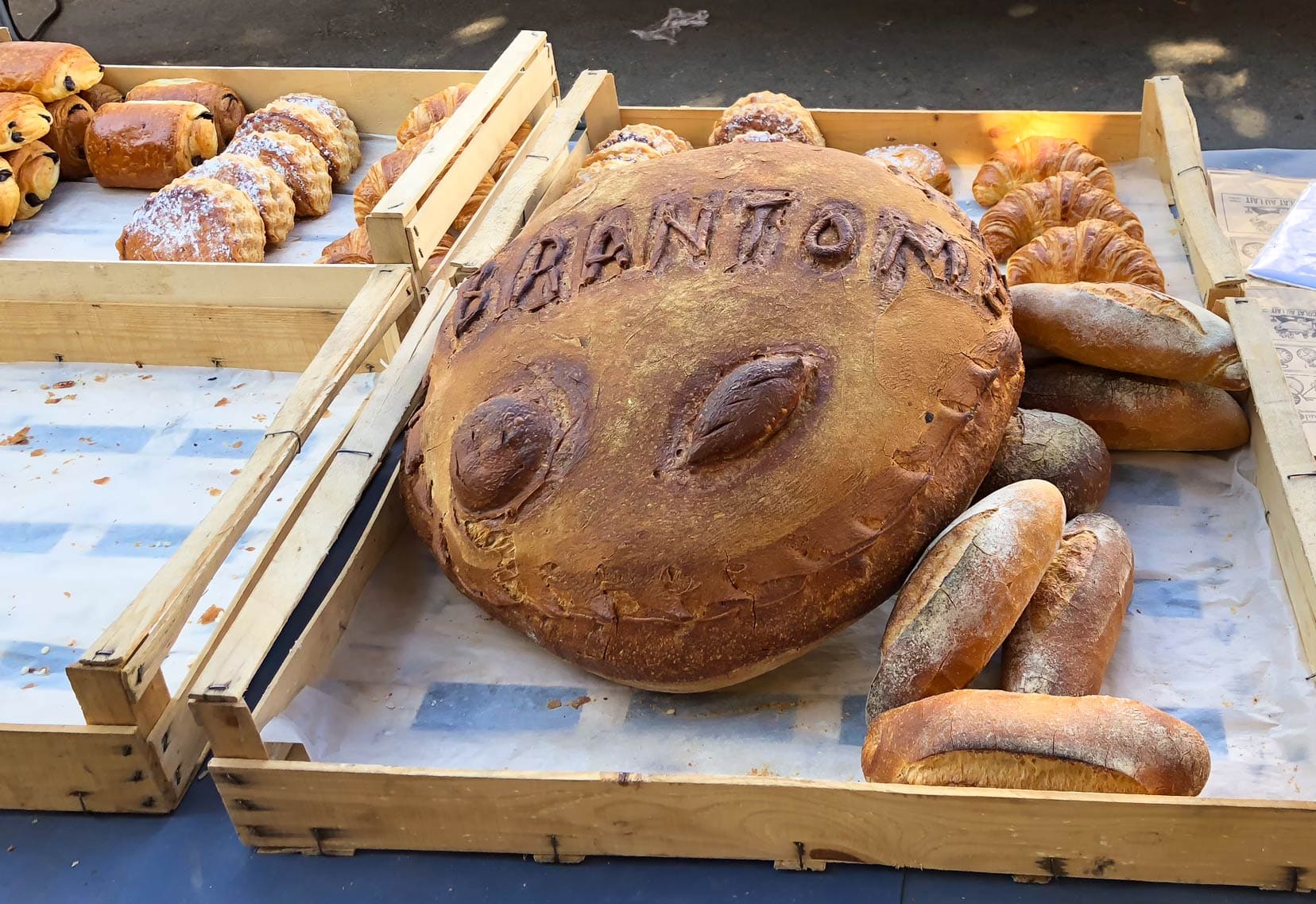
3. Villars
🚗 Driving Distance: Brântome to Villars is 15km or approx. 20 mins.
This tiny Dordogne village of Villars was our home for nine months, and I must admit this little piece of the Dordogne holds a special place in my heart.
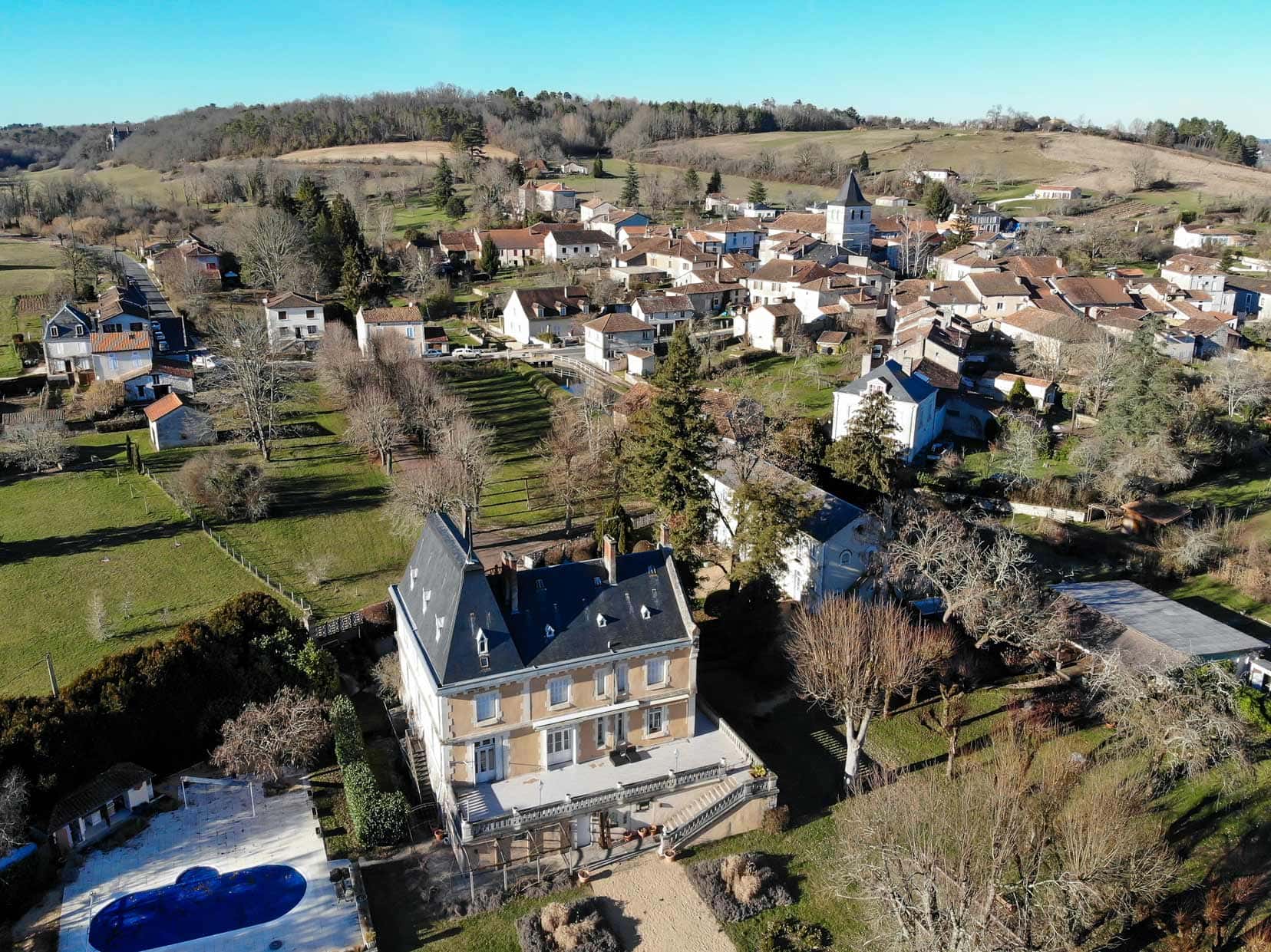
Villars is certainly one of the smaller villages on this exploration through Dordogne, but it is not without its own charm. You’ll not have the hustle and bustle of the busier towns from this village of nearly 500 residents.
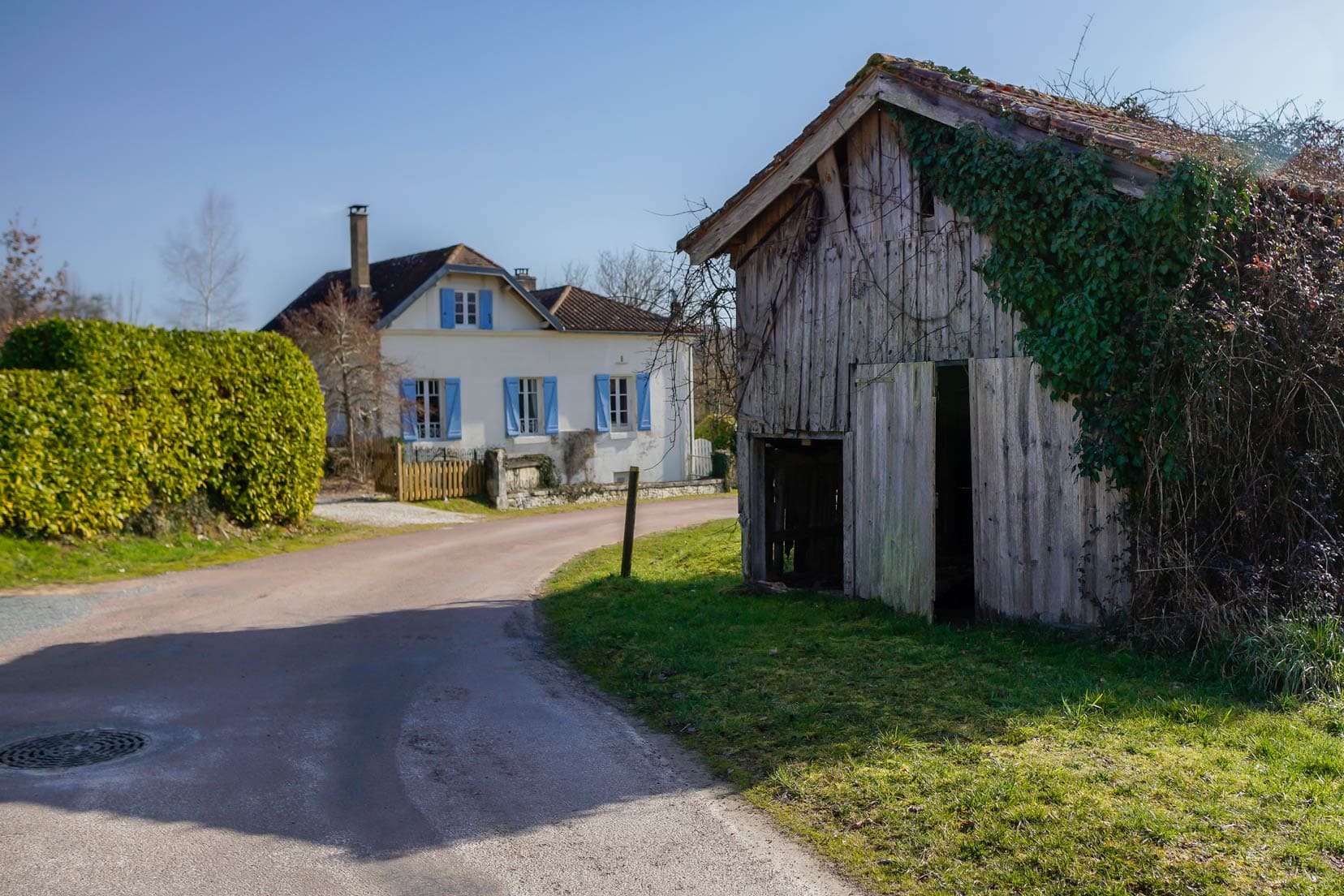
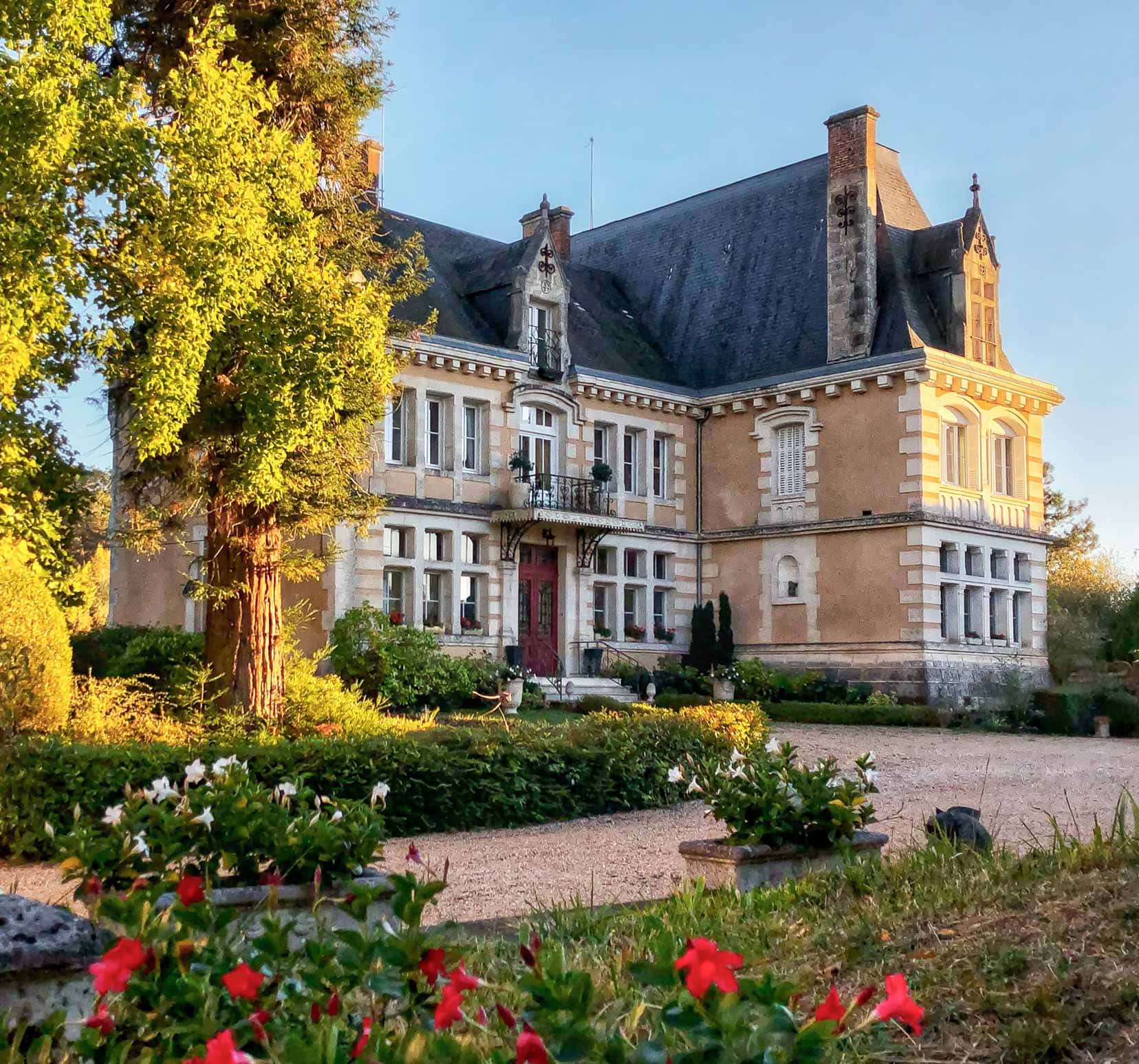
Just one kilometre from the village centre is the Chateau de Puyguilhem. Built in the Renaissance style, this chateau, reminiscent of the Loire Valley Chateaux, is classified as a historical monument.
You can wander the grounds and you can also take a guided tour of the chateau.
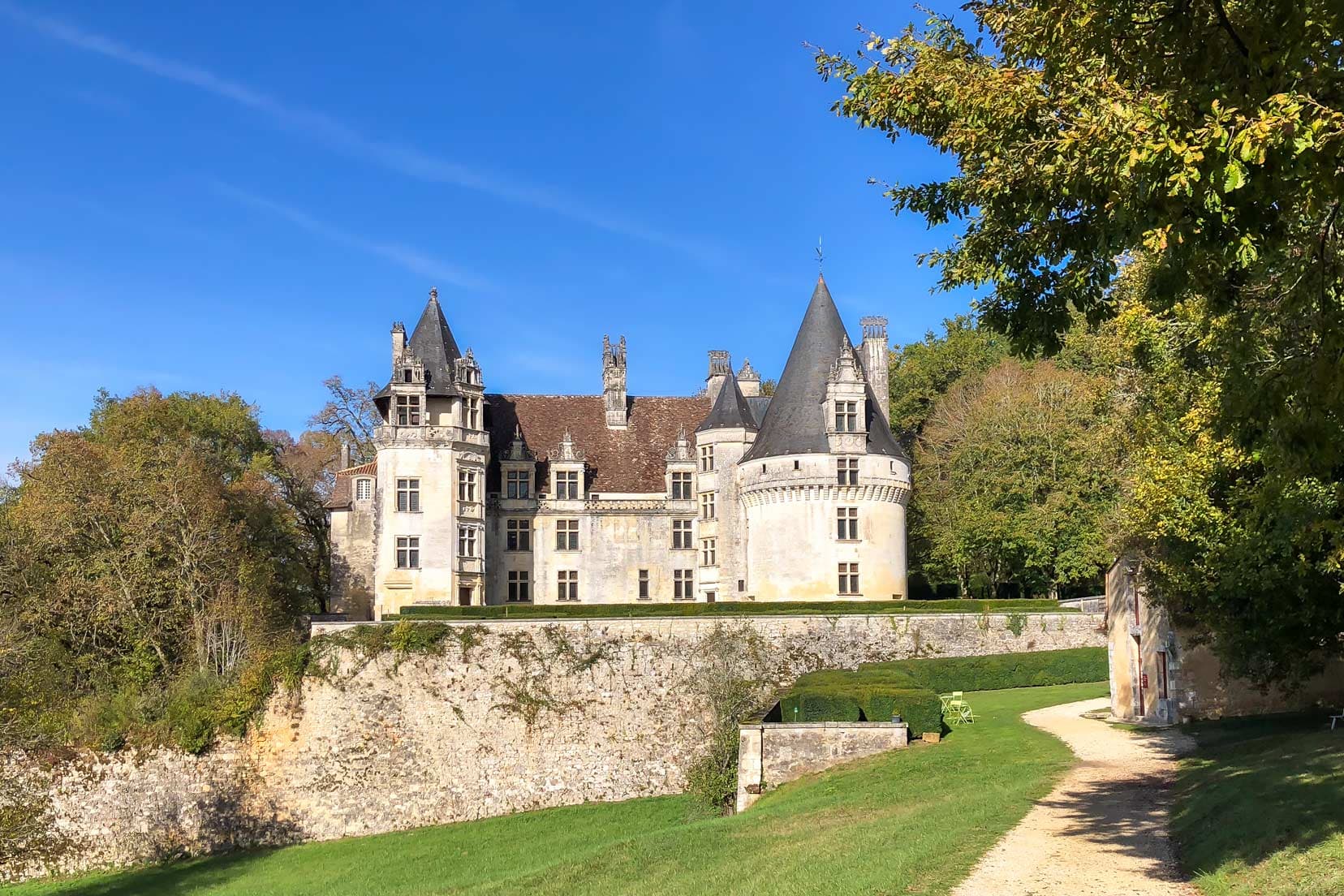
The Boschaud Abbey ruins are discovered just two kilometres from Villars village centre. An easy stroll through the countryside.
This Cistercian Abbey ruin is classified as a historical monument and is free to explore. The ruins also are used to host various cultural events during the year.
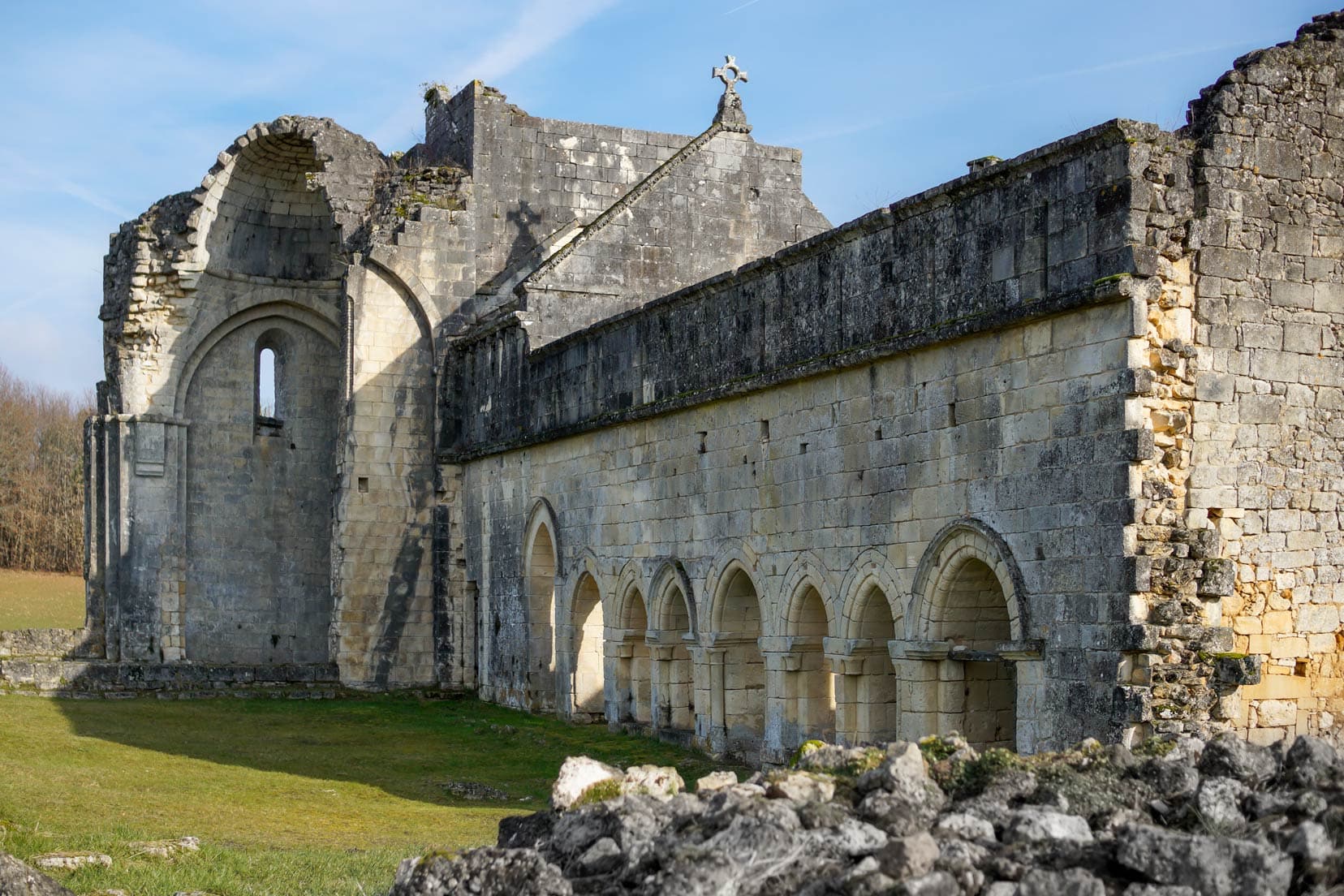
🎊 What’s On – Villars
Christmas Markets: Held annually in December, these markets are a festive highlight.
⭐️ Accommodation: La Sérénelle
Rating: Superb | Wifi | In Town | We know the hostess, Eliane and a stay here would be divine.
🦭 Check Rates and Availability
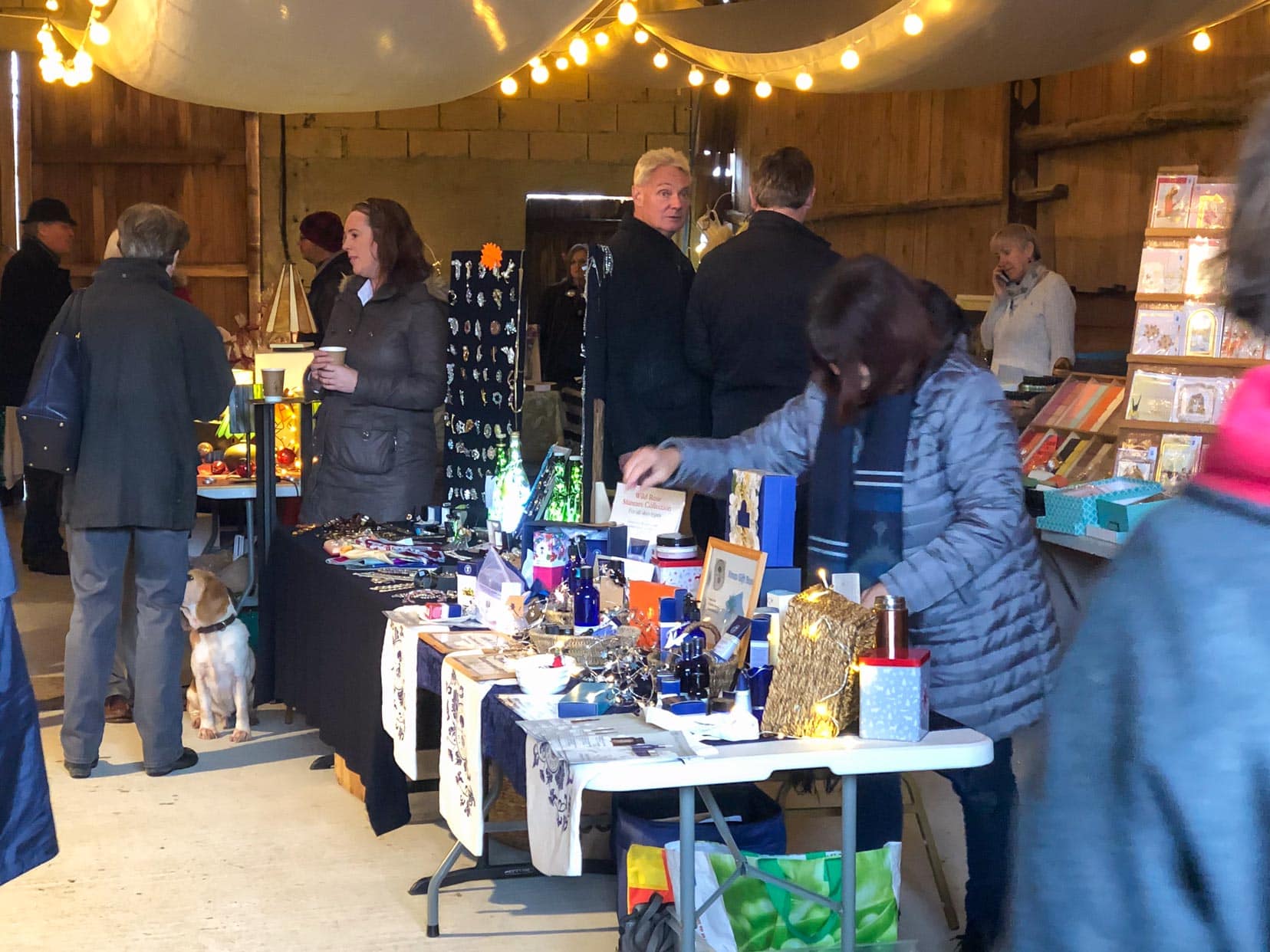
4. St. Jean De Cole
🚗 Driving Distance: Villars to St. Jean De Côle is 8km or approx. 10 mins.
Another of the most beautiful villages in Dordogne is St. Jean de Cole, a medieval village dating back to the 11th century.
The attractive village square is the epicentre. On one side is the 12th-century Chateau de la Marthonie, and on the other side is the Byzantine church of St Jean Baptist, built in the 12th century.
At one time, the chateaux belonged to the Marthonie family, but they upgraded when they built the more lavish Chateau de Puyguilhem in Villars.
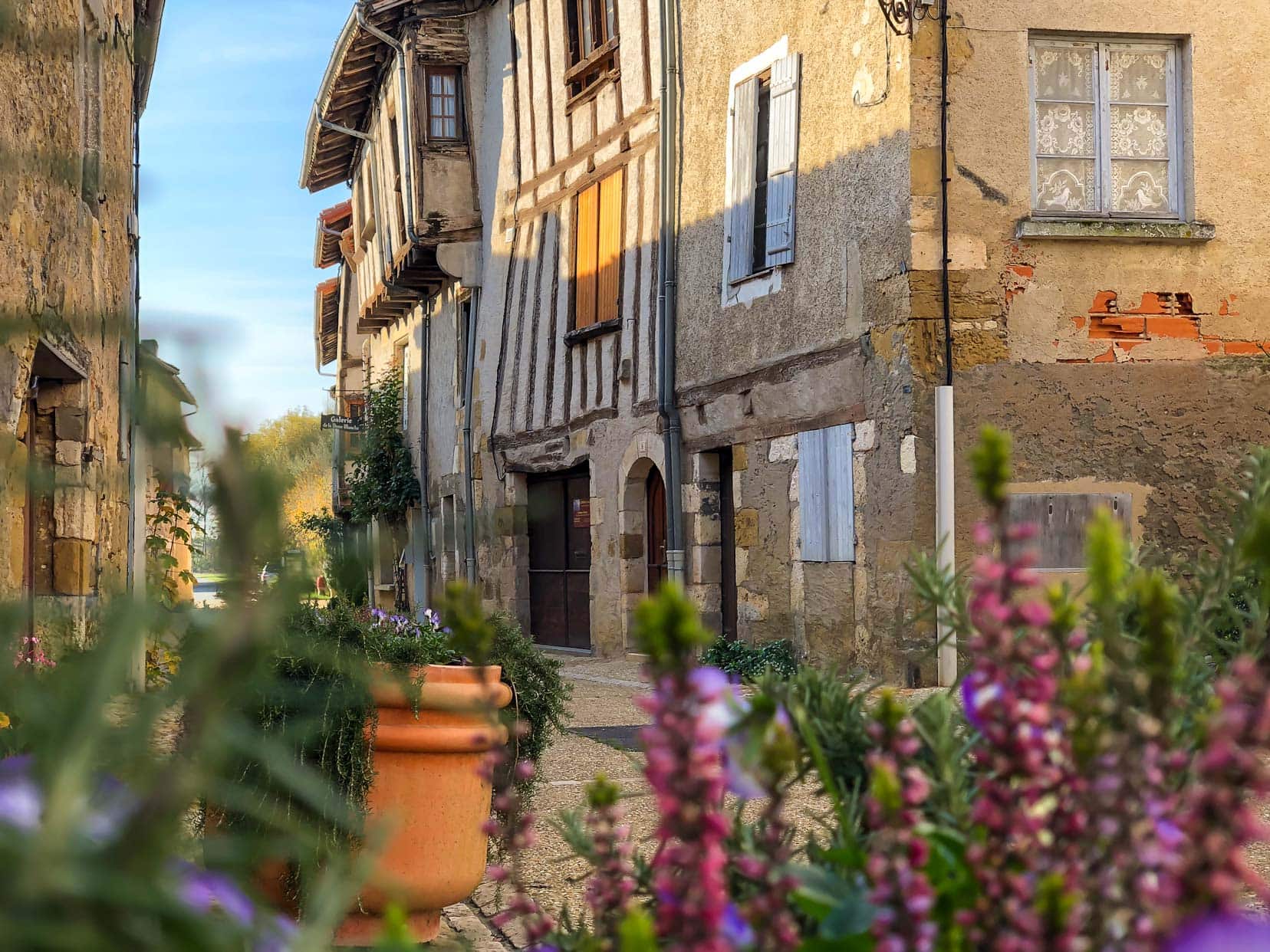
St Jean de Cole has been awarded two flowers in the iconic French Cities and Villages bloom competition and is one of the Plus Beaux Villages de France.
This award was established in 1982, and small rural villages with a rich cultural heritage are judged on their tourist appeal and their tourism planning.
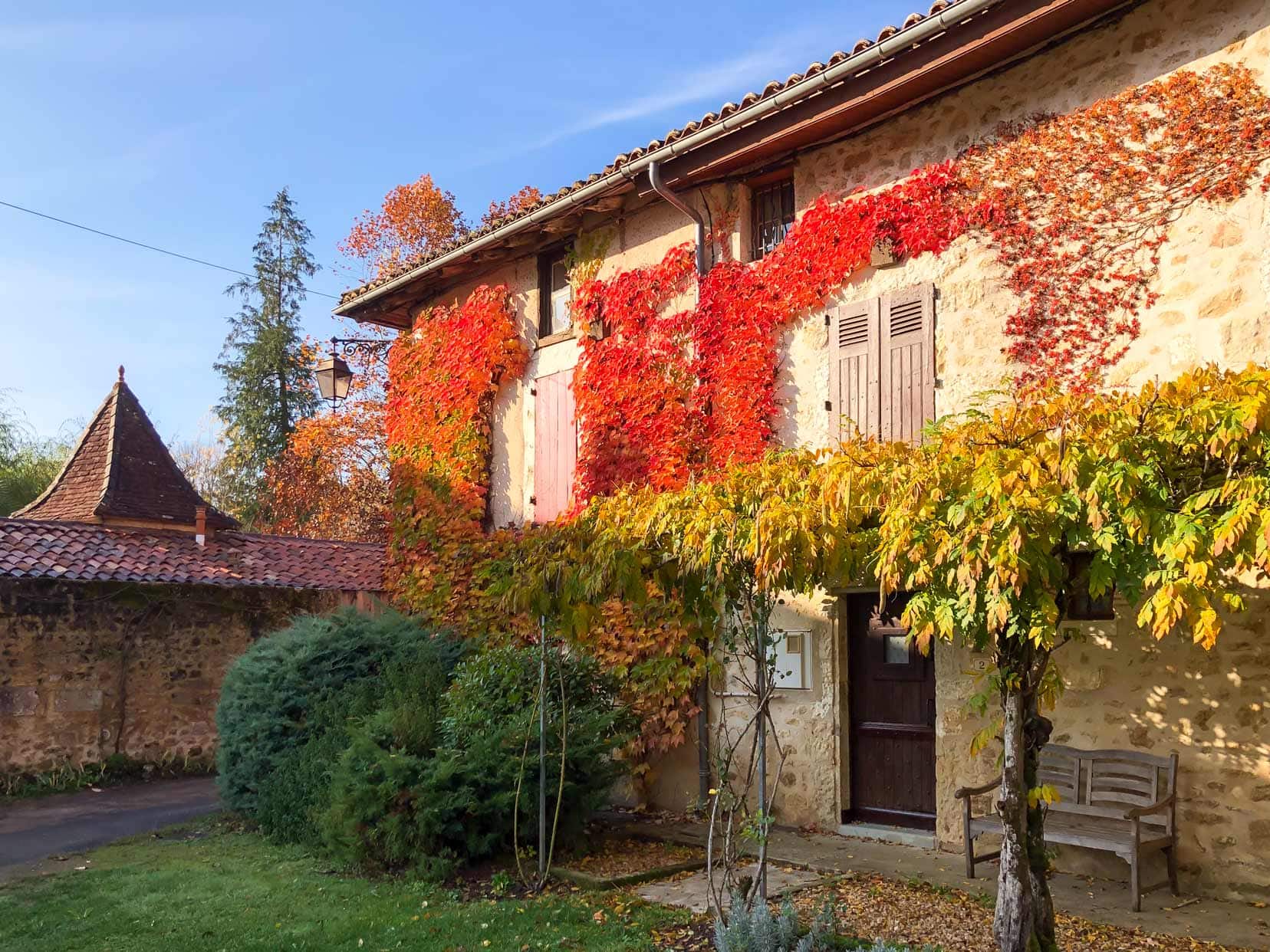
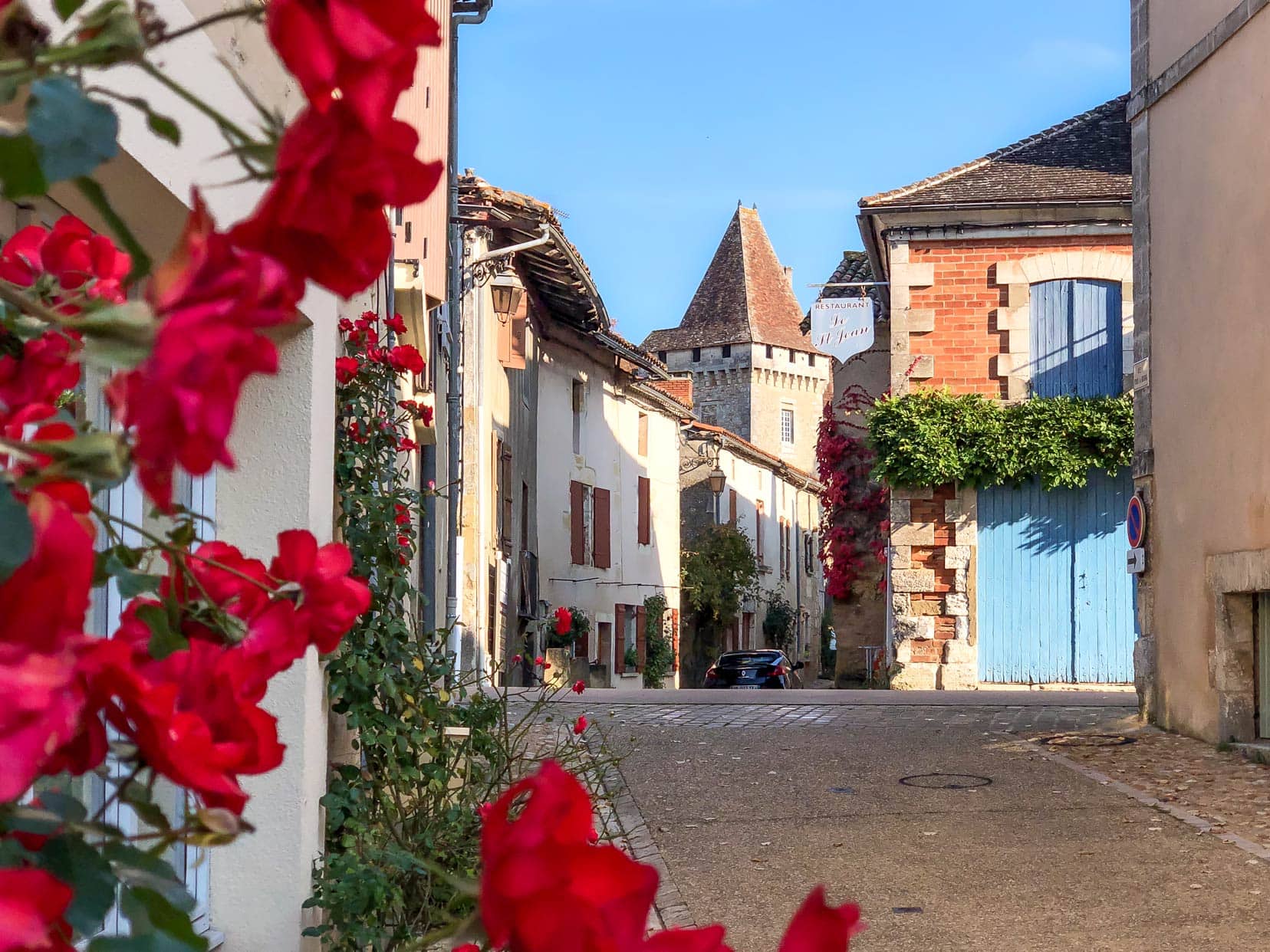
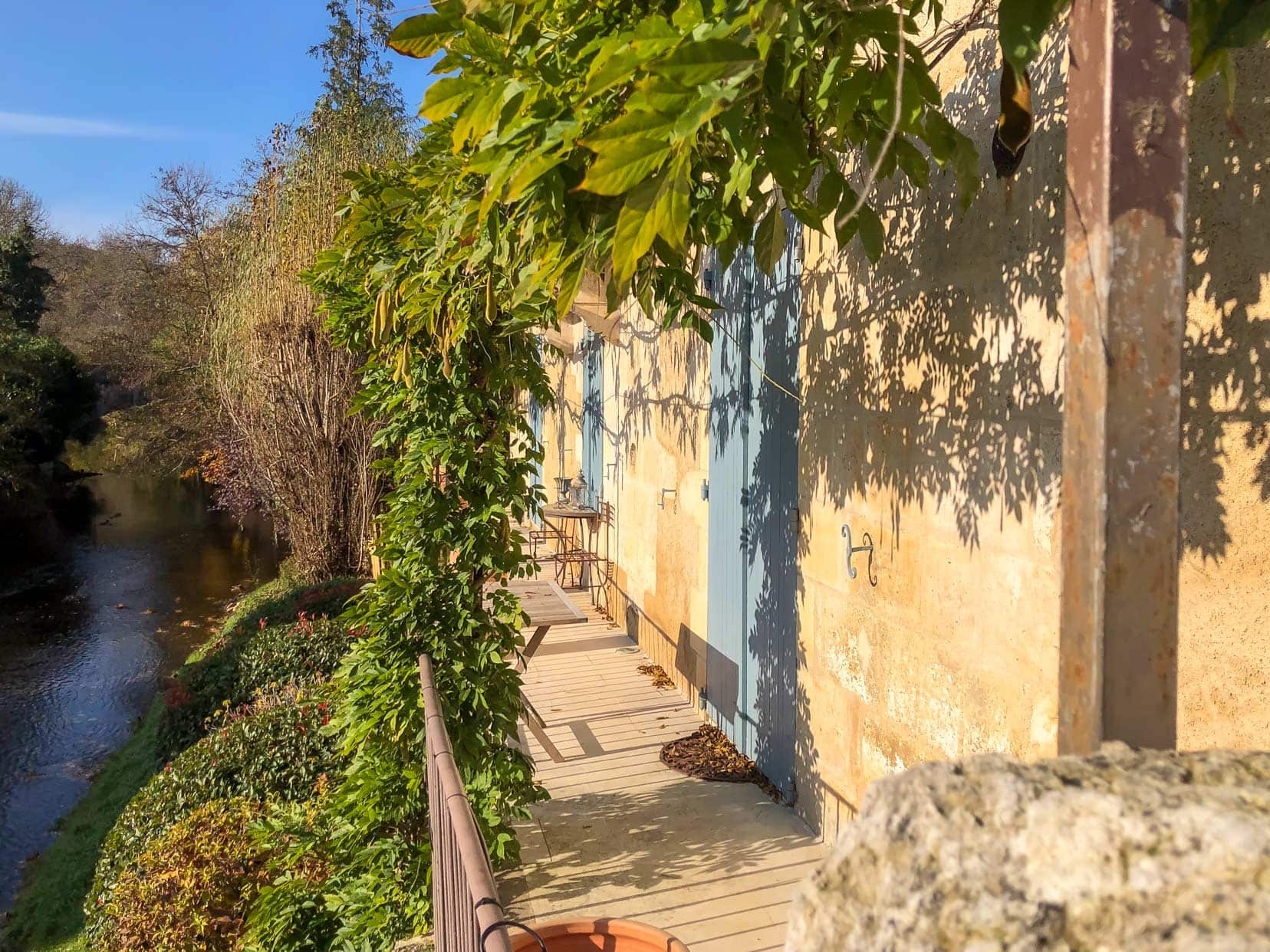
There is a gorgeous little bridge near the edge of St.Jean de Cole village. Named the Donkey Bridge, its arches span the river Côle and date back to the 15th century.
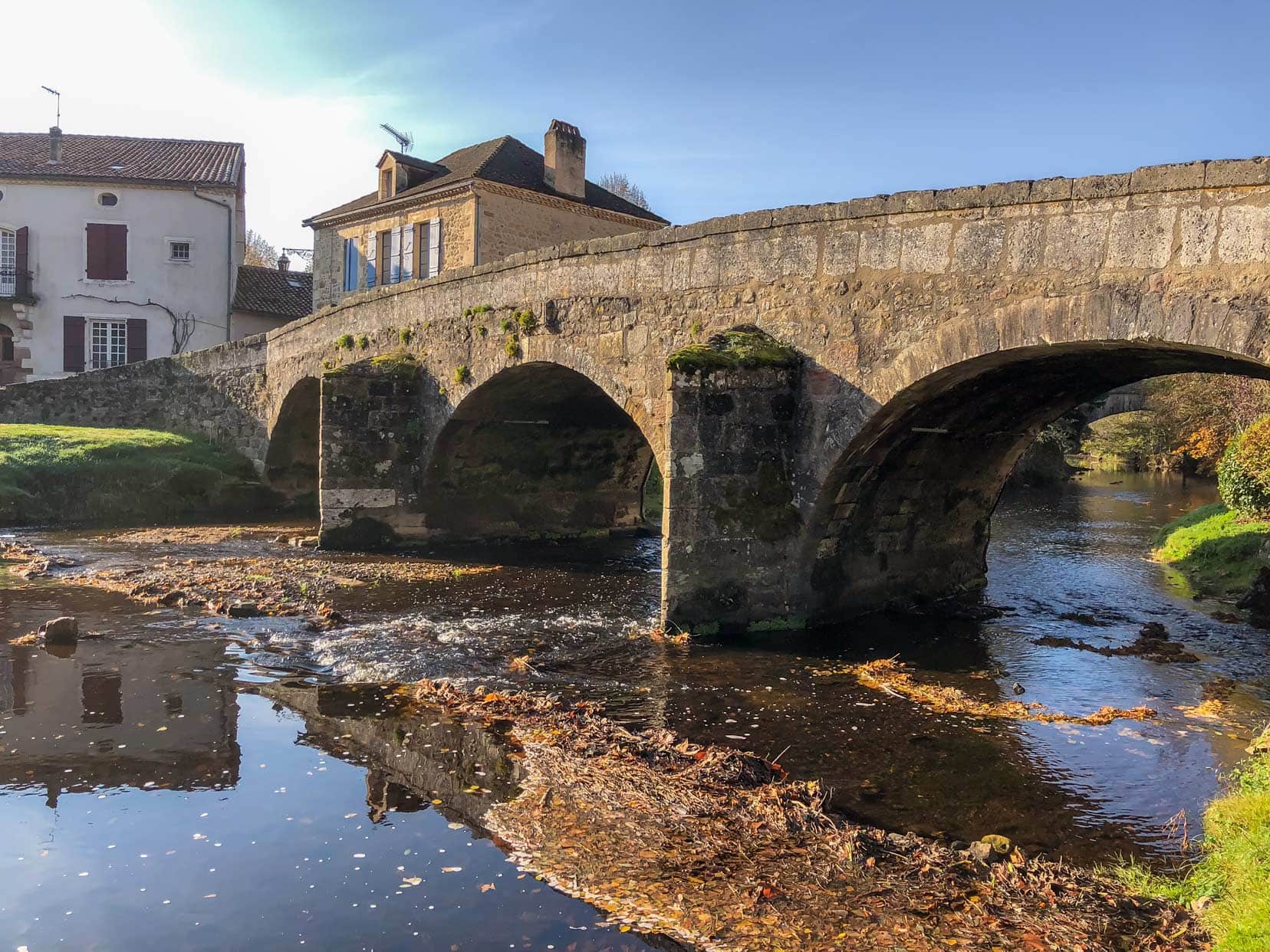
If you are visiting St. Jean de Cole in early May, then you mustn’t miss Les Floralies, a popular flower festival that attracts several thousand visitors. During the festival, the village is festooned with flowers and exhibitors share their passion for all things floral.
🎊 What’s On – St. Jean De Cole
- Floralies Festival: Visit on the second weekend of May to experience the village transformed with thousands of flowers during this stunning floral festival.
- Musicôle Festival: Enjoy multiple concerts throughout the village in June.
⭐️ St Jean de Cole Accommodation: Au Cœur de Mauchat
Rating: Superb | Wifi | 5km from Town | Breakfast
🦭 Check Rates and Availability
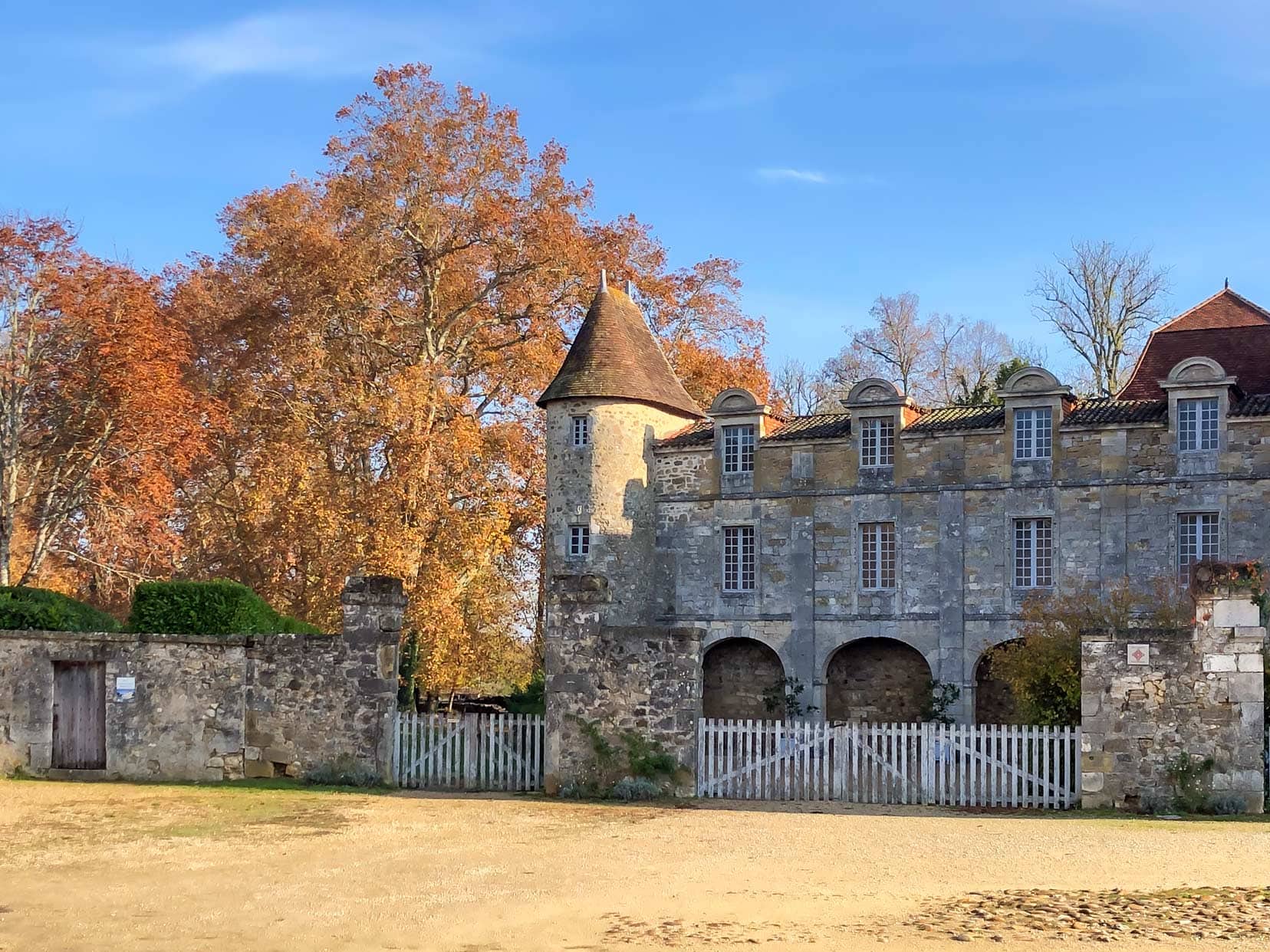
5. Perigueux
🚗 Driving Distance: St. Jean De Côle to Perigueux is 35km or approx. 40 mins.
Perigueux, although not pretty to look at on its outskirts, has a historic centre which is worth a visit.
Here, you’ll find the Cathedrale Saint-Front. Shaped like a Greek Cross with impressive domes, it is one of the largest in Southwest France.
It is surrounded by Perigueux’s medieval houses and inviting boulevards.

Another local historical attraction is the Tower of Vesone. It is the only remaining part of a sacred temple dedicated to the goddess Vesunna, the ancient protector of the city. It is surrounded by gardens, and the Vesunna Museum is nearby.
The Vesunna Museum houses the Roman origins of Périgueux and the remains of a large Gallo-Roman house, which are now protected under glass.
🎊 What’s On – Perigueux
- Fest ‘Oie: On the first weekend of March, celebrate the Annual Goose Festival in Sarlat. Enjoy Perigueux’s renowned local delicacies, including foie gras and truffles.
- Christmas Market: This festive destination will run from December 2, 2023, to January 6, 2024.
⭐️ Perigeux Accommodation: Chez Dany
Rating: Exceptional | Wifi | Town Centre
🦭 Check Rates and Availability
6. Sarlat La Caneda
🚗 Driving Distance: Perigueux to Sarlat La Caneda is 65km or approx. 1hr 10 mins.
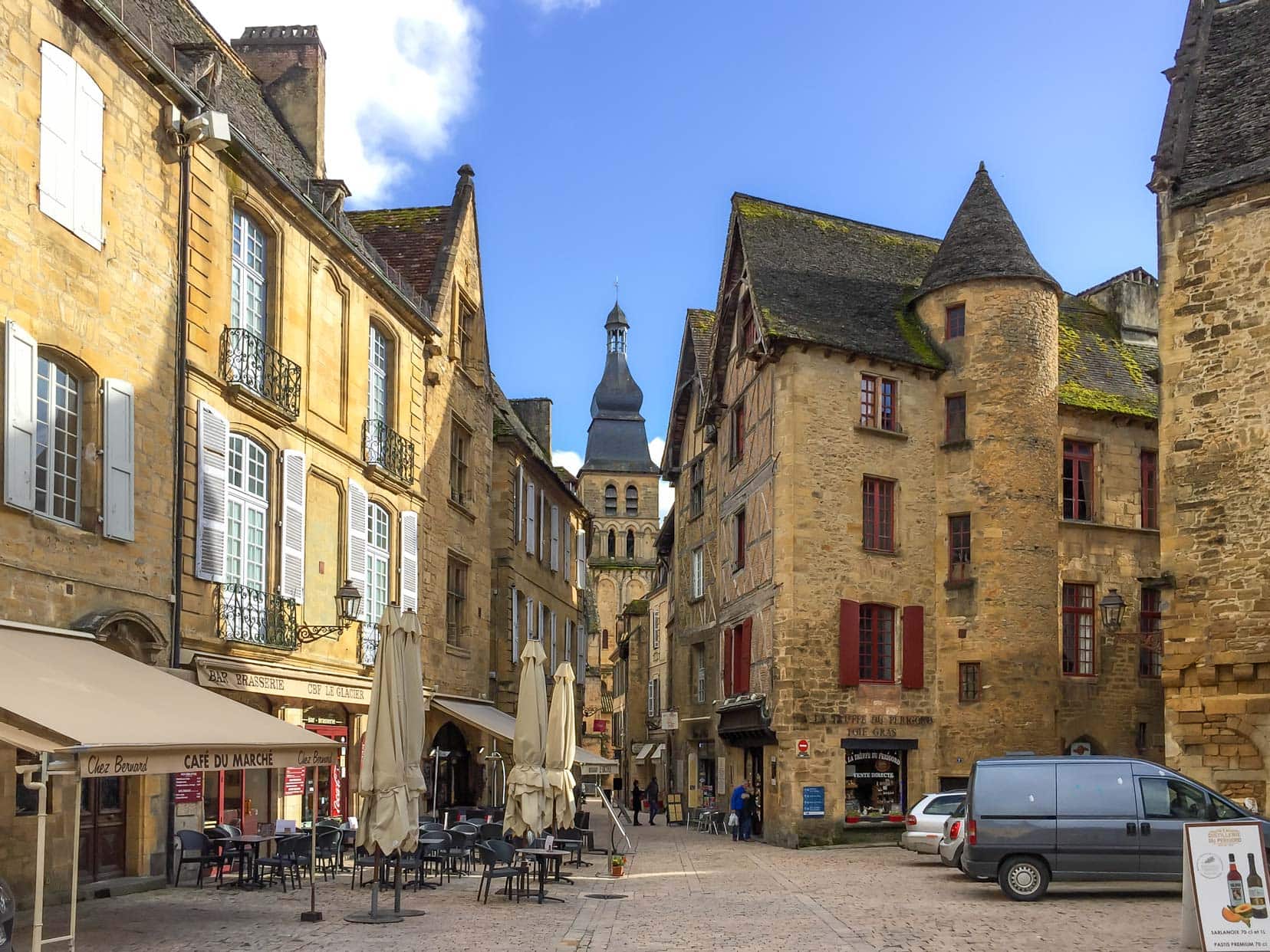
Sarlat-la-Canéda, often referred to as simply Sarlat is a popular medieval town in the Perigord Noir region of the Dordogne.
The best thing to do here is to wander the maze of old narrow streets through the old centre of town, which will transport you back to the Middle Ages.
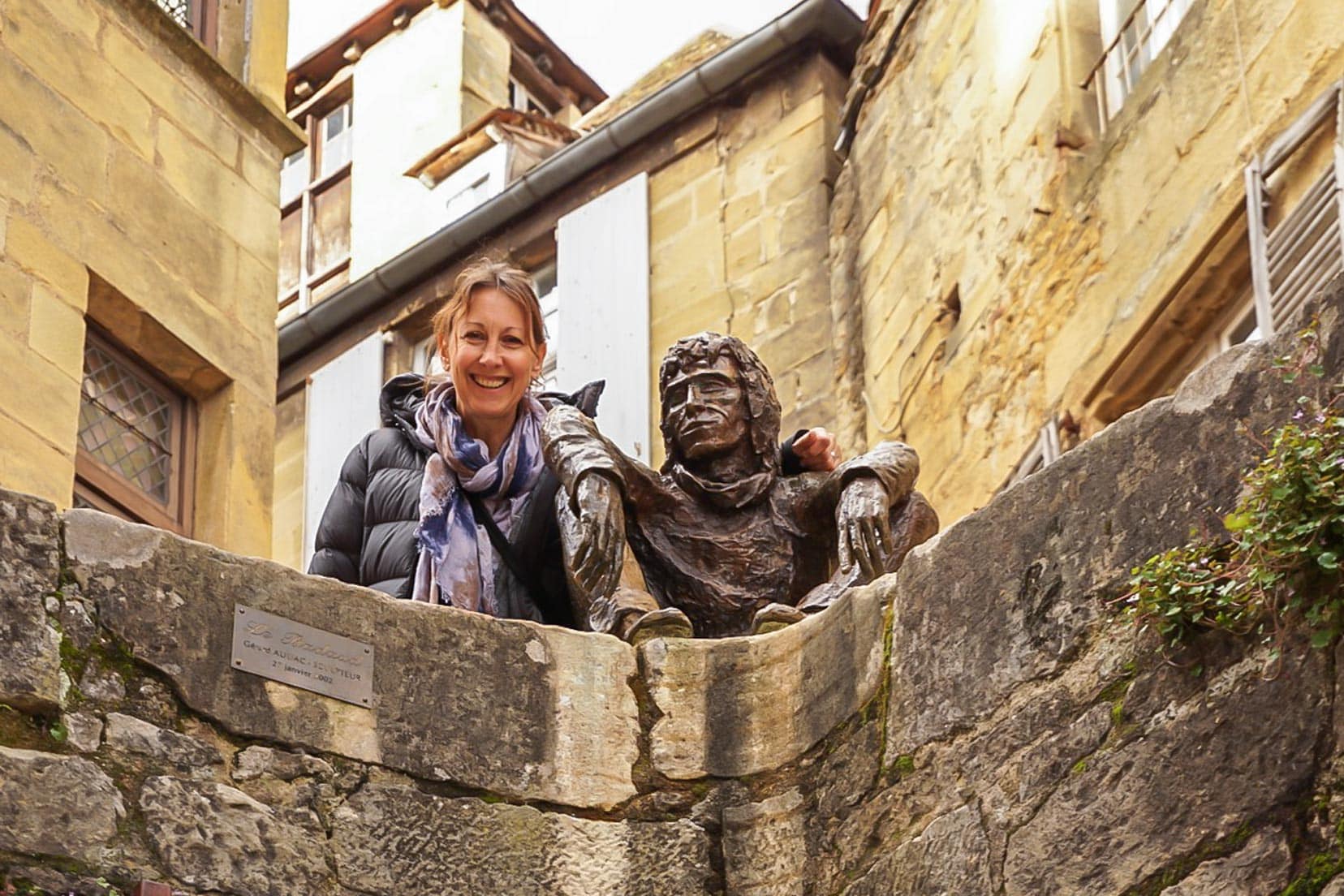
On Wednesdays and Saturdays, the town hosts one of the biggest food markets in the Dordogne region.
You can book a gourmet tour through the market, where you can taste regional specialties like foie gras, walnuts, and Monbazillac wine.
Many of Sarlat’s buildings have been restored and it has the highest density of ‘Historic Monuments’ and ‘Classified Monuments’ of any town in France.
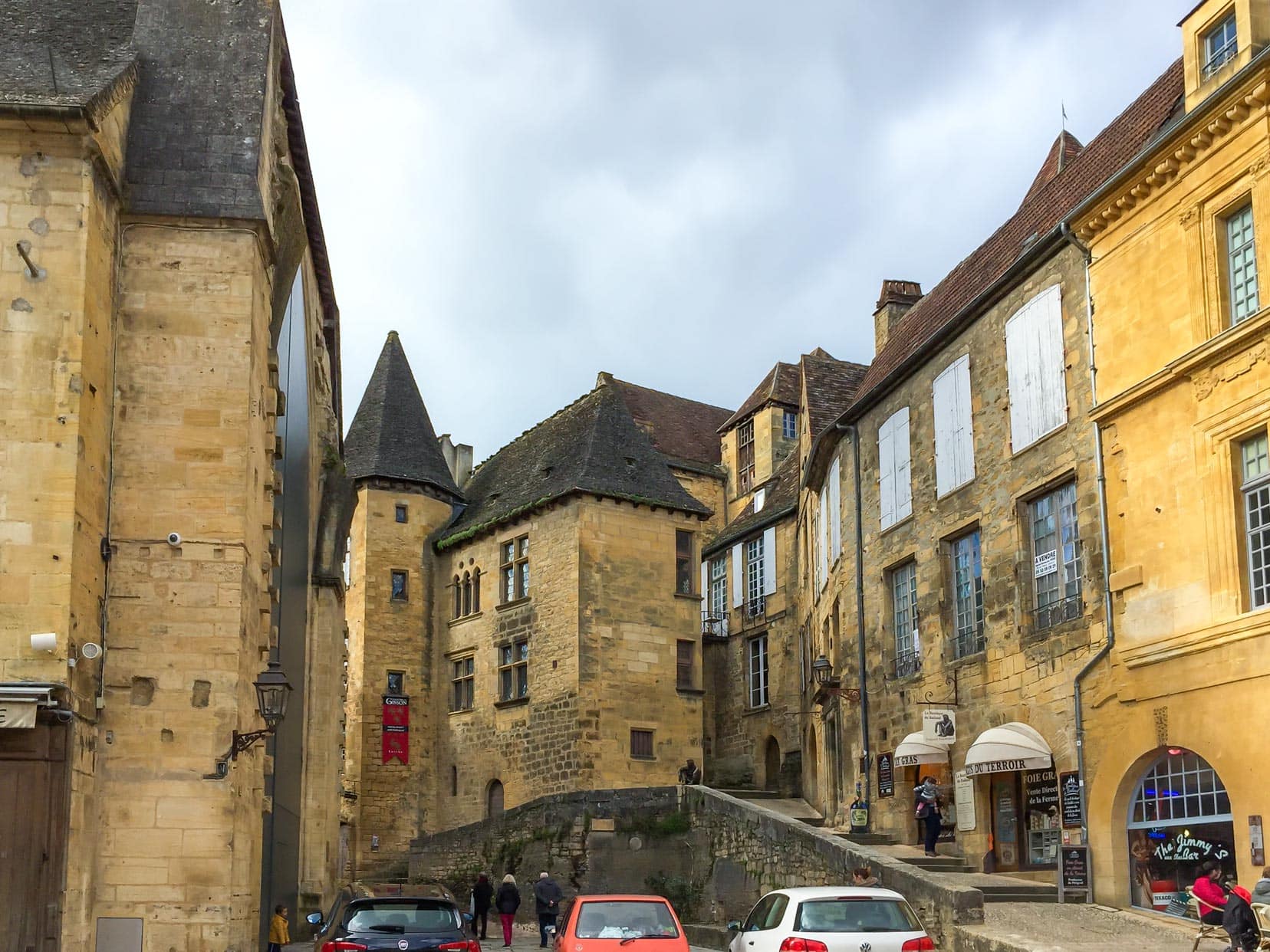
Several day tours operate from Sarlat, including the Dordogne Villages Half-Day Tour.
This small group afternoon tour lasts for about four hours and covers some of Dordogne’s most photogenic landscapes. You visit the medieval town of Domme, the 12th-century caste of Beynac and the incredible La Roque Gageac.
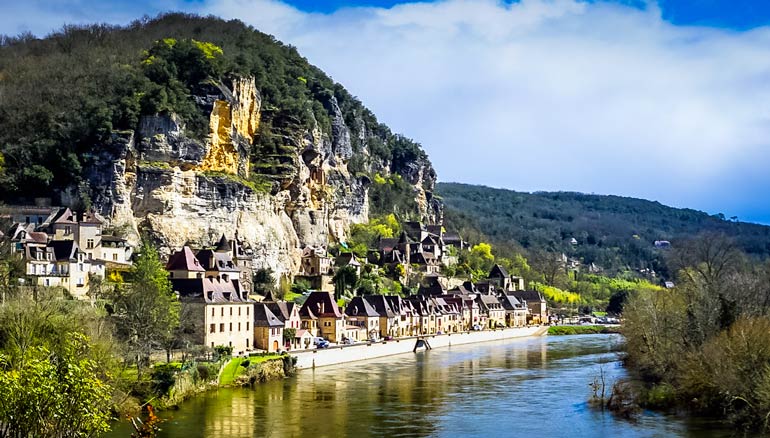
Dordogne Villages Half-Day Tour from Sarlat
👉 Find out more about the Dordogne Villages Tour | ⏰ 4 hours | ⭐️ 5/5 | Book Here
🎊 What’s On – Sarlat le Caneda
- Christmas Market: Starts at the beginning of December and runs until the end of December.
- Annual Truffle Festival: This takes place every January.
- Foie Gras Festival: Held on the first weekend of March each year.
⭐️ Sarlat-la-Canéda Accommodation: La Suite Cosy de La Boëtie
Rating: Exceptional | Wifi | Town Centre
🦭 Check Rates and Availability
7. Domme
🚗 Driving Distance: Sarlat La Caneda to Domme is 13 km or approx. 20 mins.
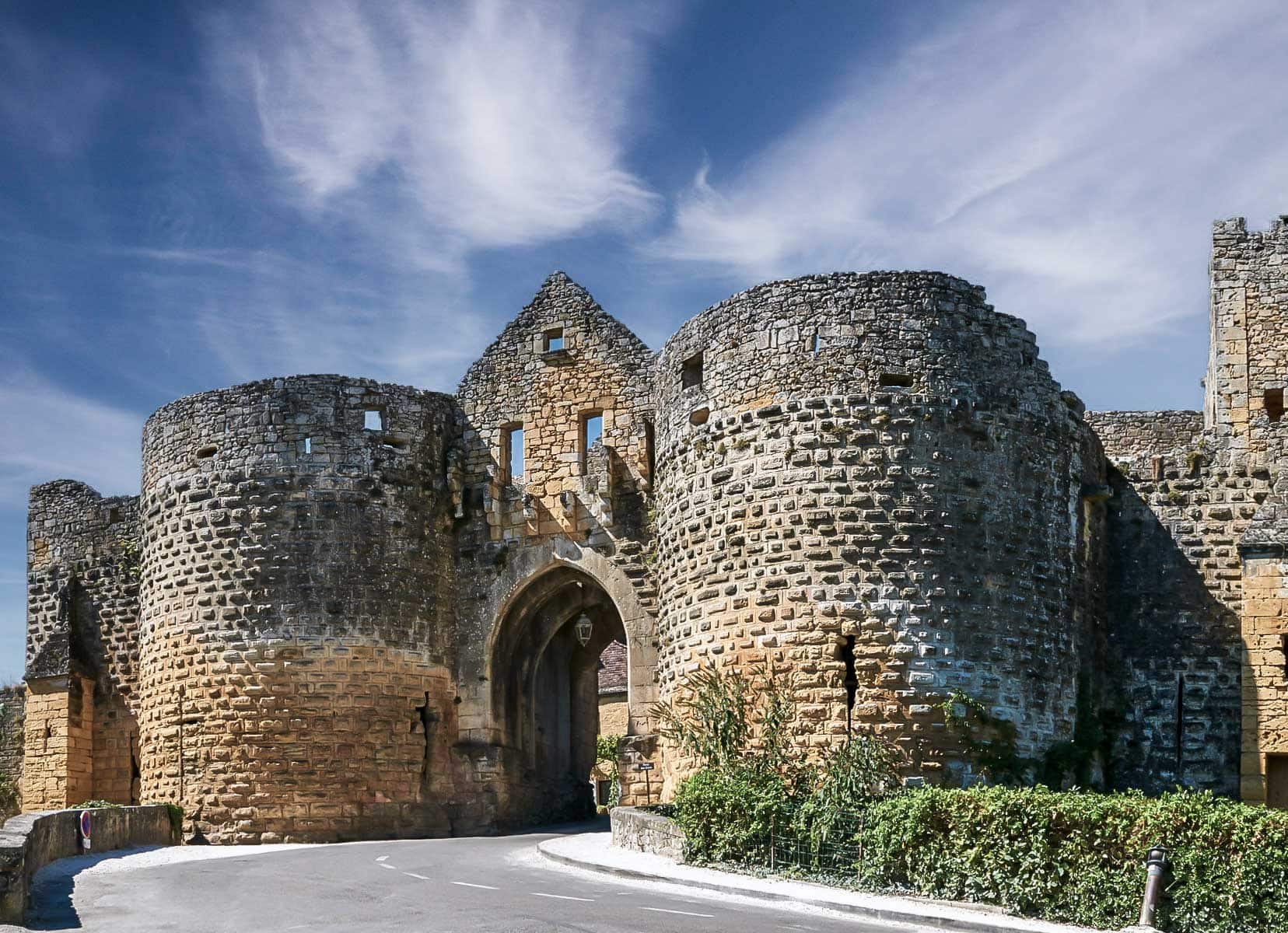
Directly south of Sarlat is the charming town of Domme, overlooking the Dordogne River. Honey-coloured houses line the flower-filled lanes of what was once a fortified town.
The city walls are still well preserved with three of the old fortified gates still standing. The Portes des Bos, the Portes des Lacombe, and the most famous is the Porte des Tours. This was where the Knight Templars were imprisoned from 1307 to 1318, and evidence of their graffiti still remains.
In Domme, you will also find the largest natural cave in the Périgord Noir, the Grotte de Domme. The entrance to the cave is at the Marketplace, and the tour takes about 45 minutes.
🎊 What’s On – Domme
- Easter Monday Egg Hunt: Join the fun with an egg hunt on Easter Monday.
- In June: Fun fair, theatre festival, St Jean fire and Music festival.
⭐️ Accommodation: 1 logis à Domme
Rating: Exceptional | Wifi | Town Centre
🦭 Check Rates and Availability
8. La Roque-Gageac
🚗 Driving Distance: Domme to La Roque-Gageac is 5 km or approx. 10 mins.
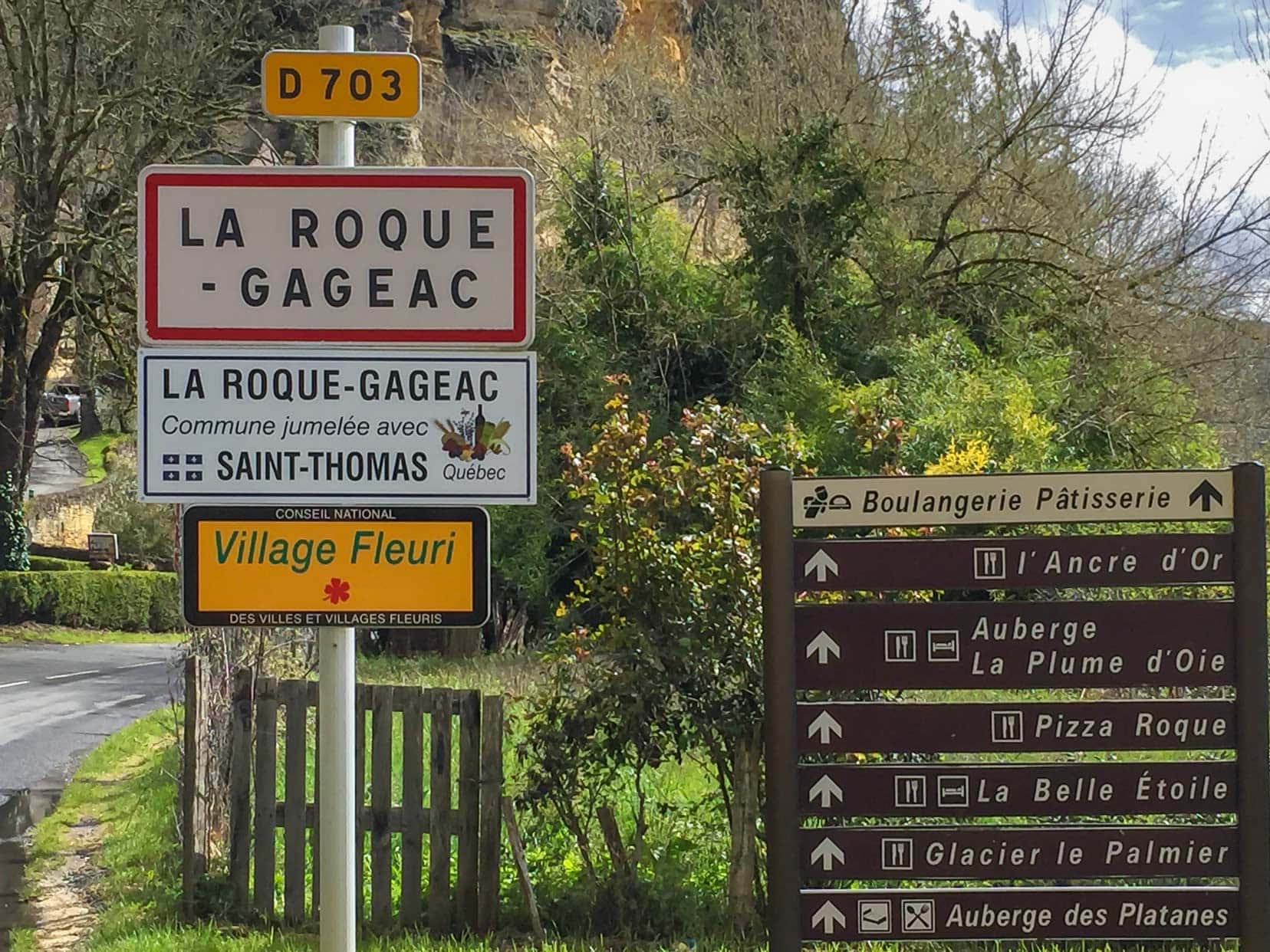
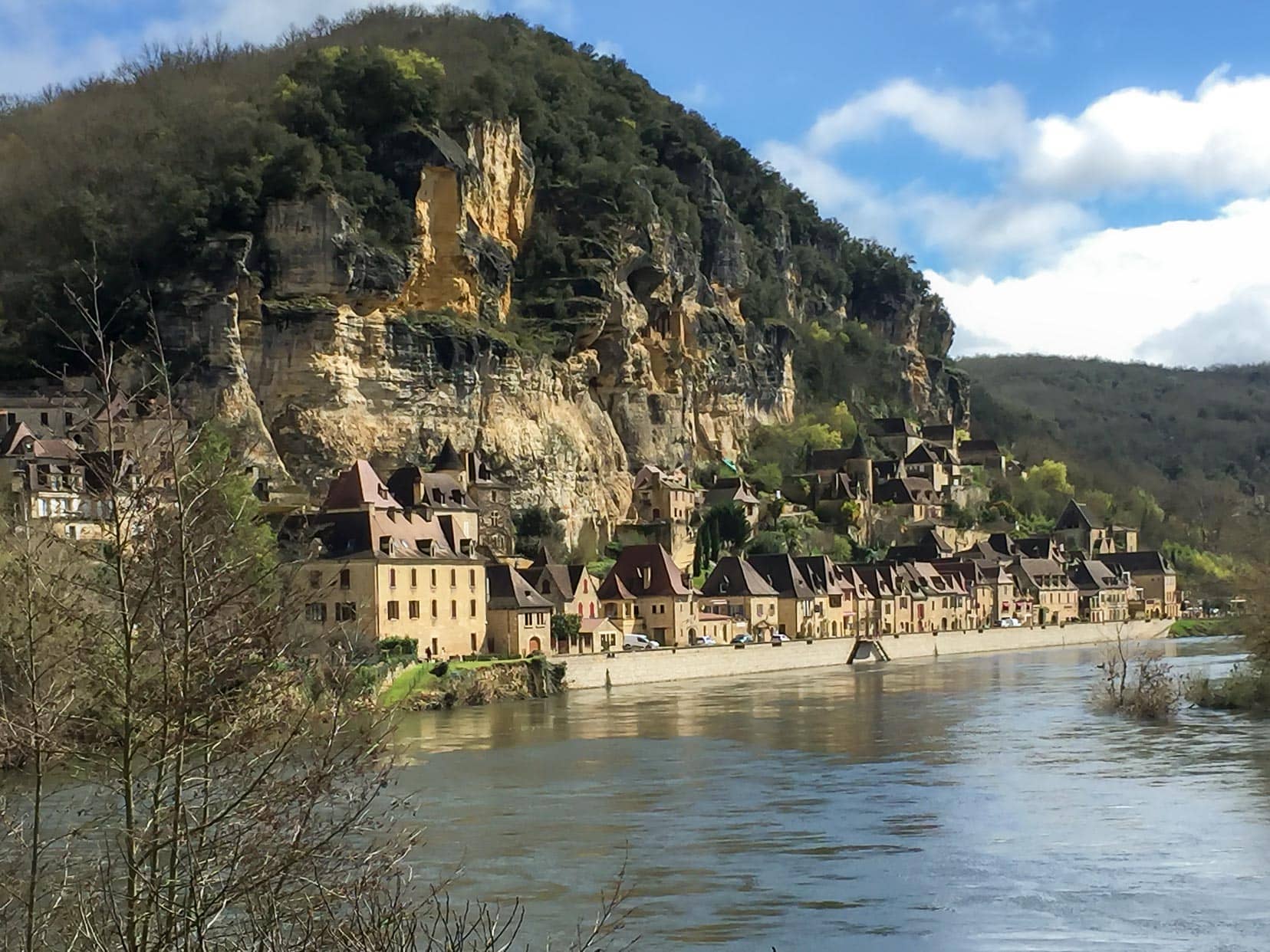
About 8km from Sarlat is the picturesque Dordogne village of Le Roque Gageac, yet another of the most beautiful villages in France.
We visited on a rainy day and yet still its charm shone through – as did the sun just a couple of times amongst the showers.
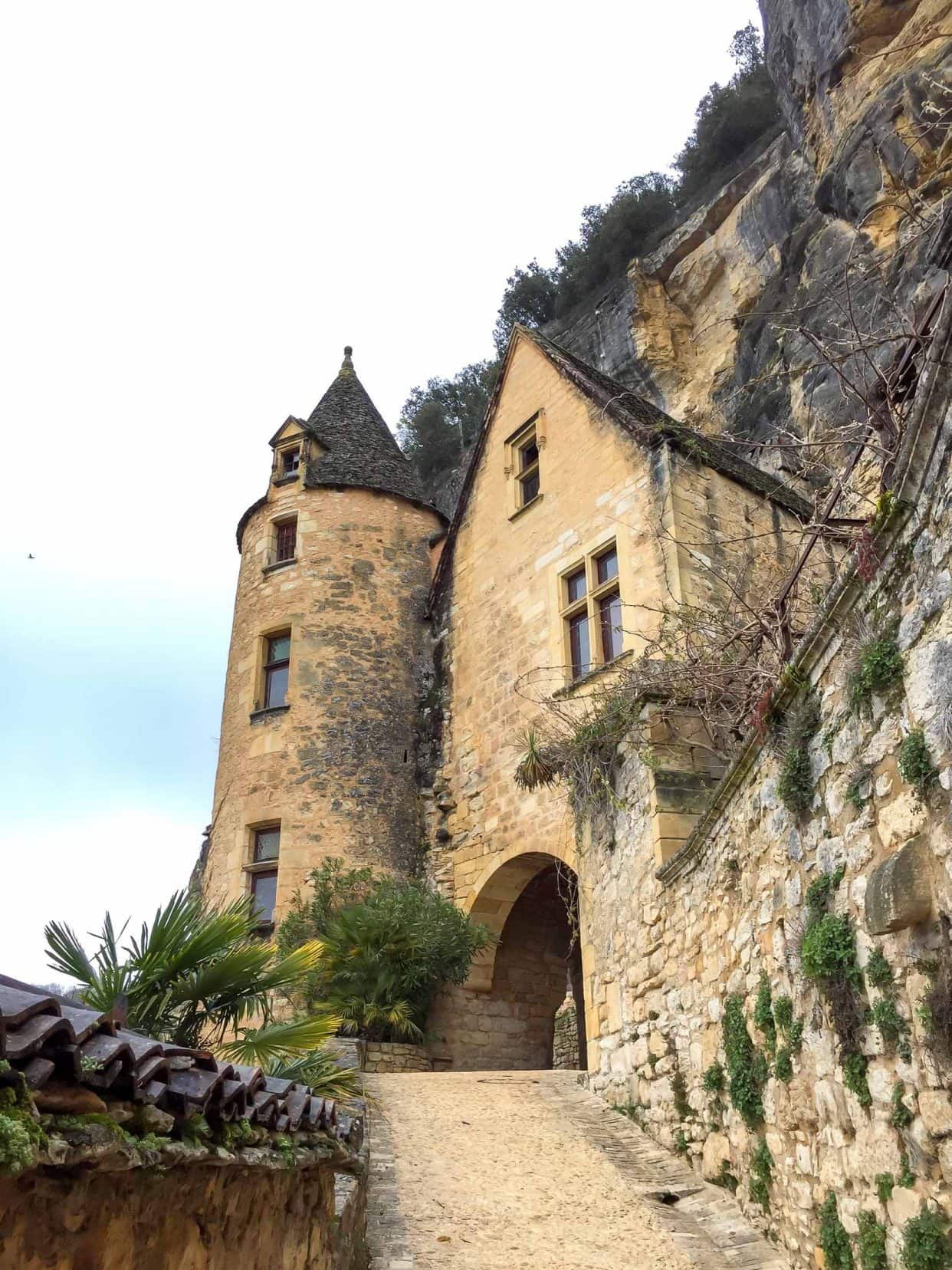
Interestingly, the street climbing the hill behind the charming ochre-coloured houses on the main street takes on an exotic feel with banana trees, palms, and bamboo lining its route.
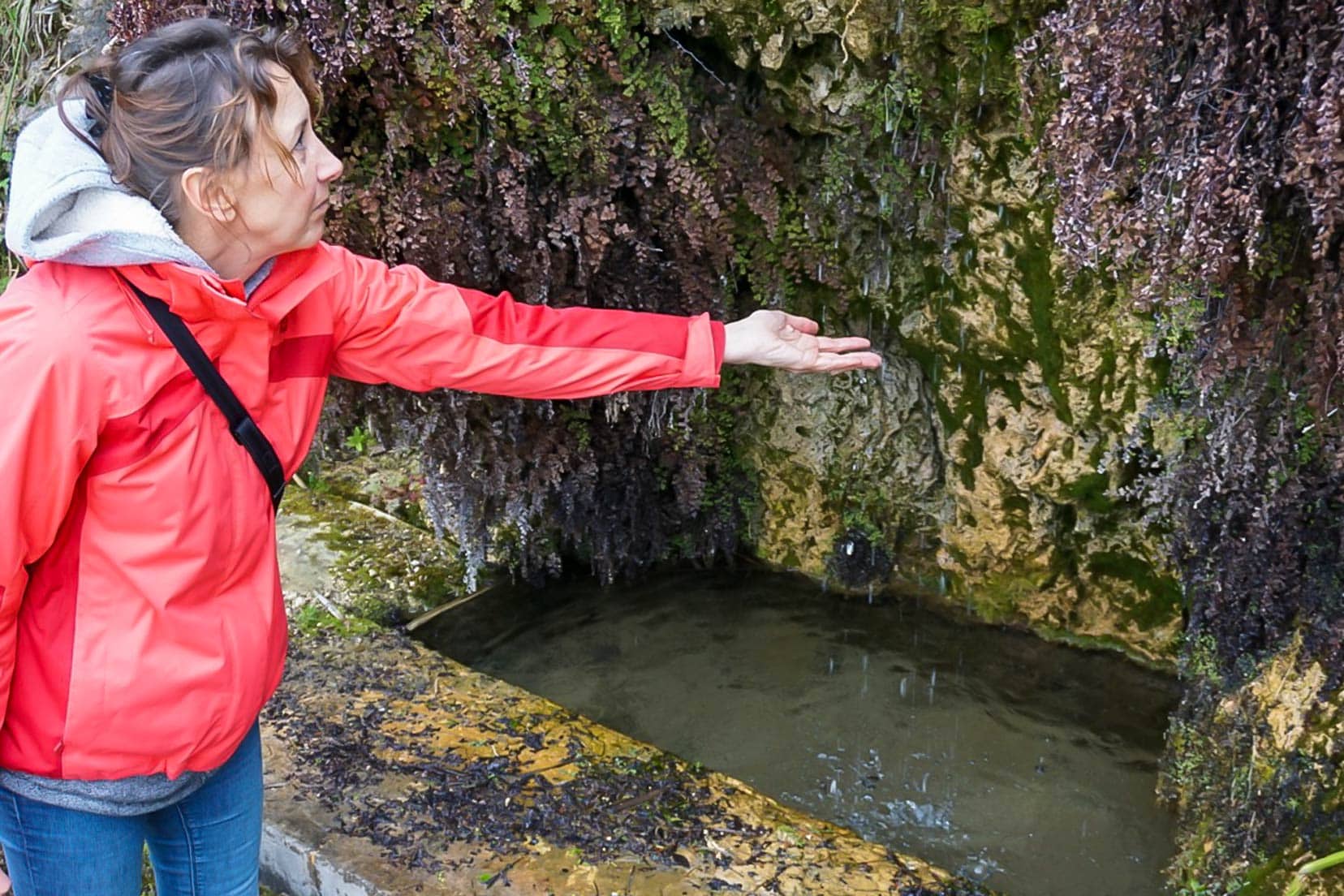
A must-see when visiting the Dordogne village of La Roque Gageac is the magnificent Marqueyssac Gardens.
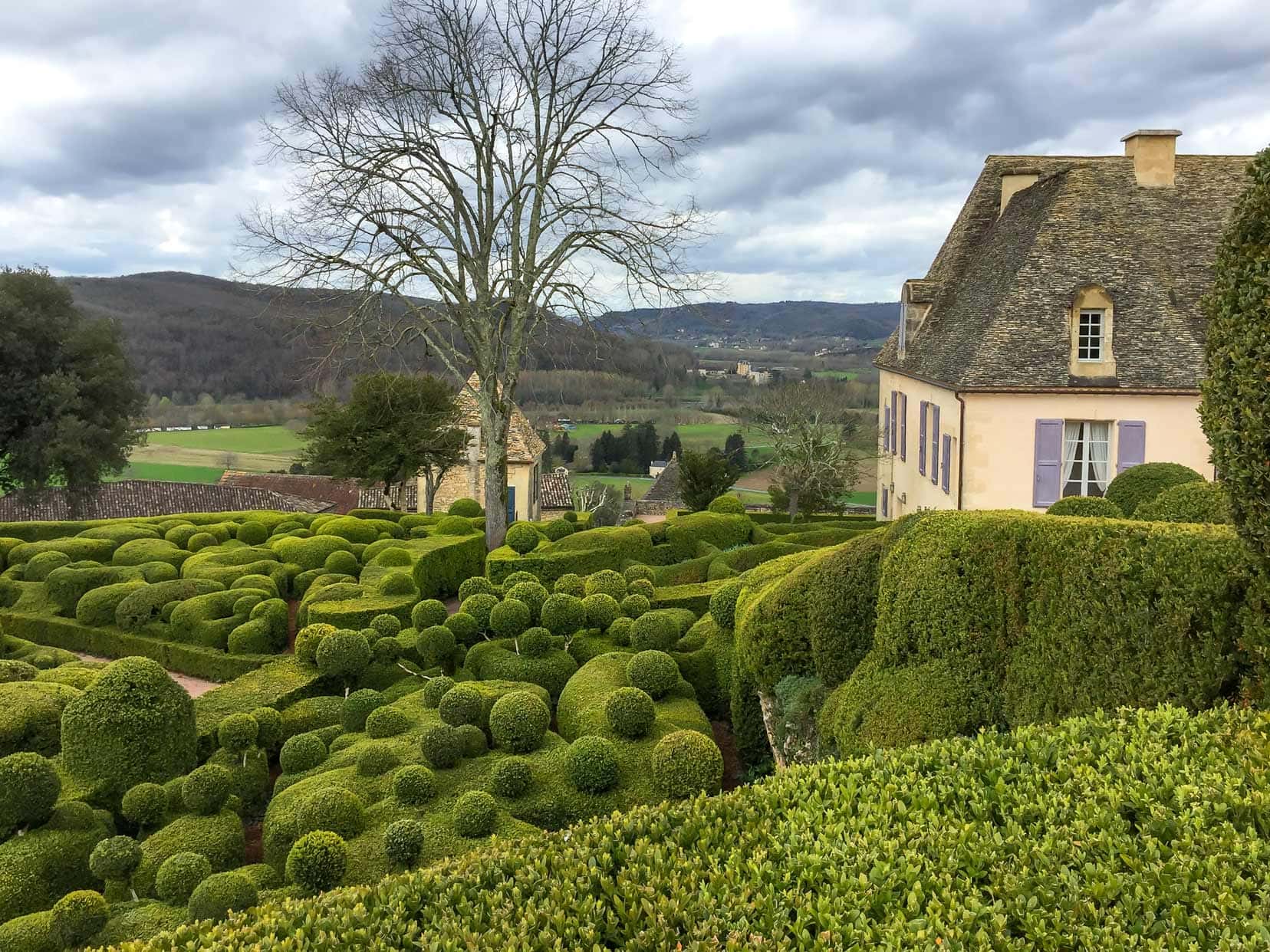
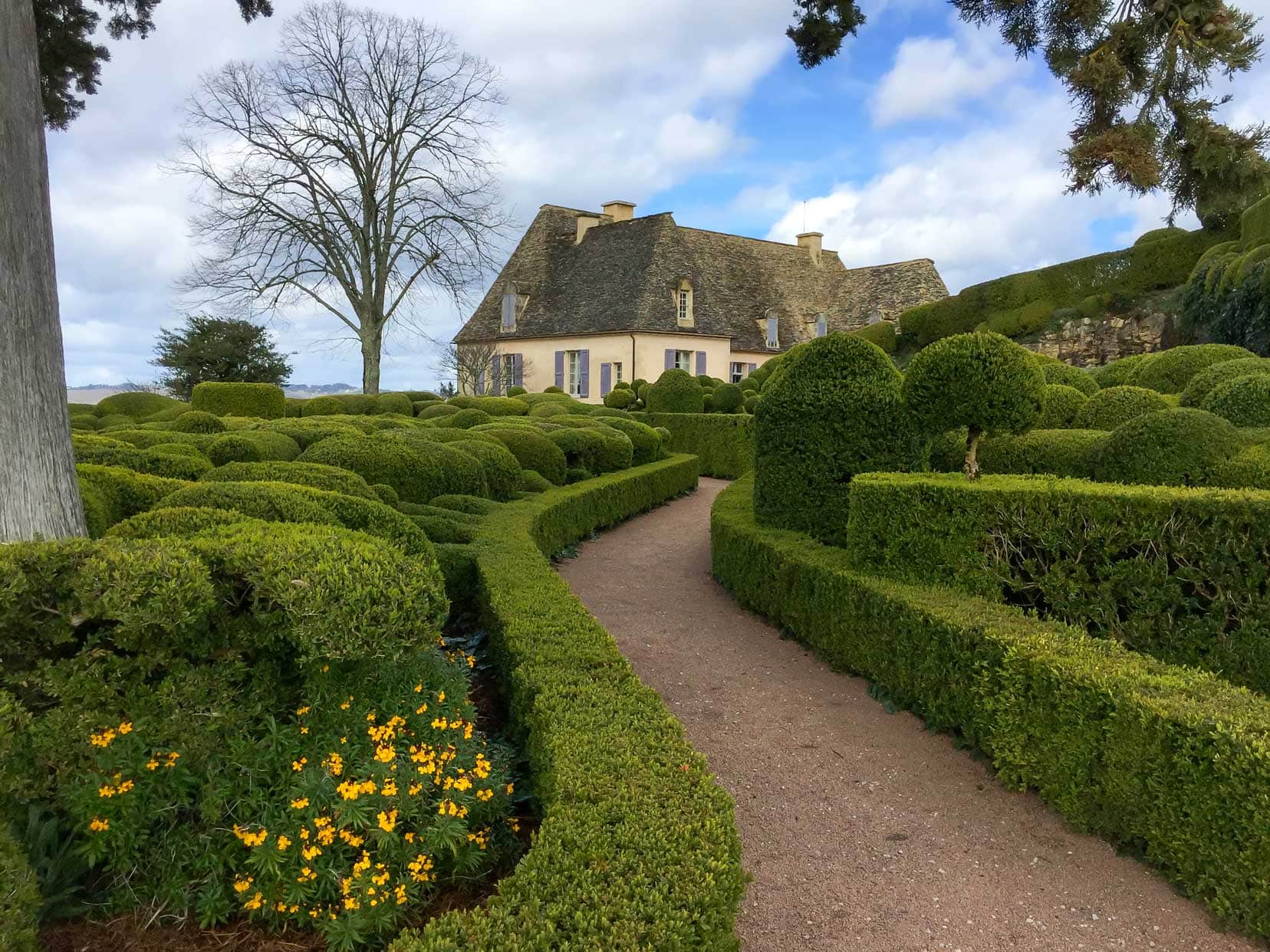
Set on chalky limestone cliffs, these gorgeous gardens overlook the Dordogne Valley. Filled with verdant hand-clipped boxwood hedges and woodland paths, they are a perfect place to spend an hour or two.
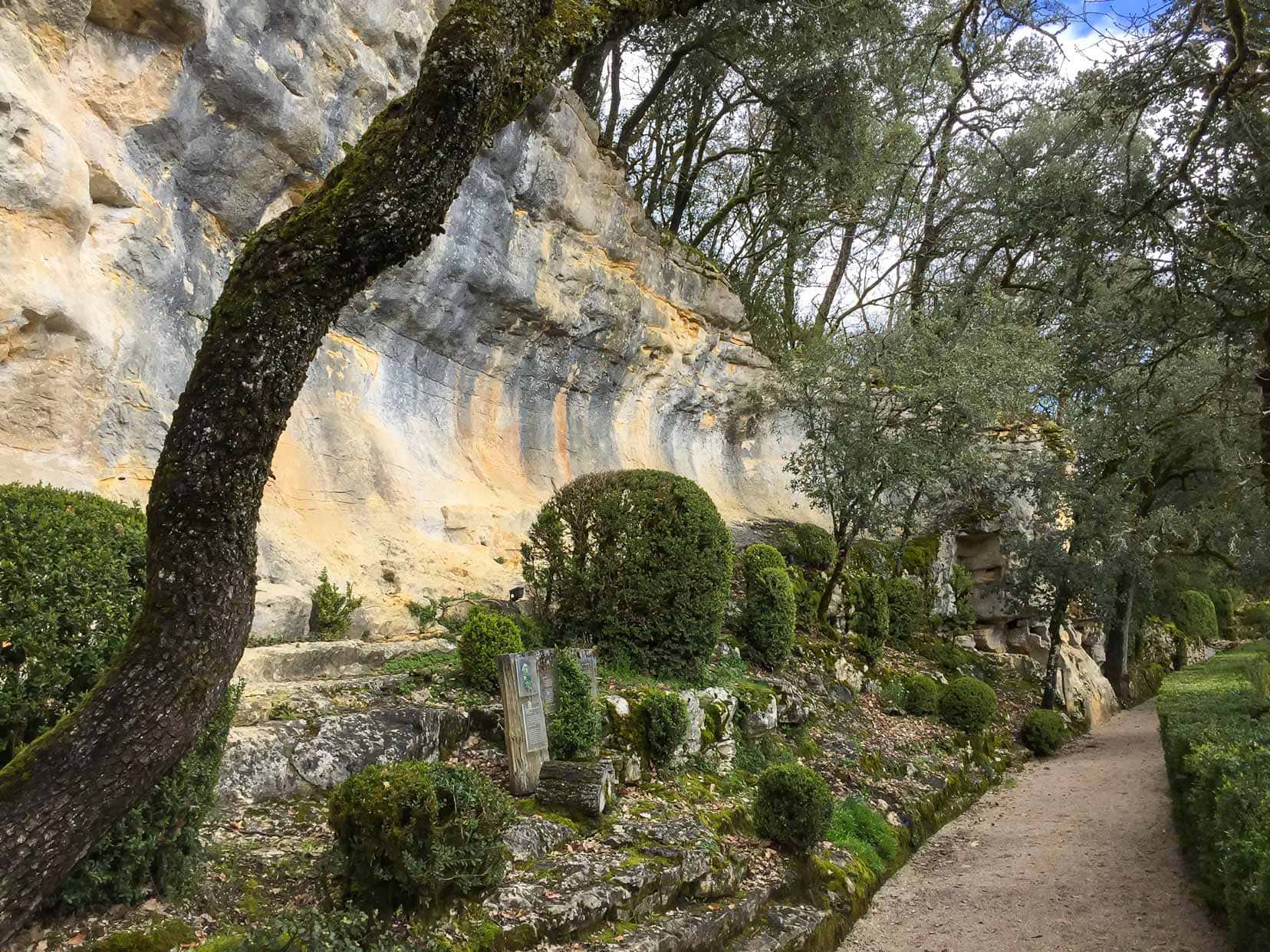
When we were there, we topped off our visit to the Marqueyssac Gardens with tea and cake at the Tearooms overlooking the valley.
🎊 What’s On – La Roque-Gageac
- Pétanque Competition: Held annually from June to October.
- Votive Festival: Celebrate on the first weekend of August with a carnival and musical entertainment.
⭐️ Accommodation: the little bamboo
Rating: Exceptional | Wifi | Town Centre
🦭 Check Rates and Availability
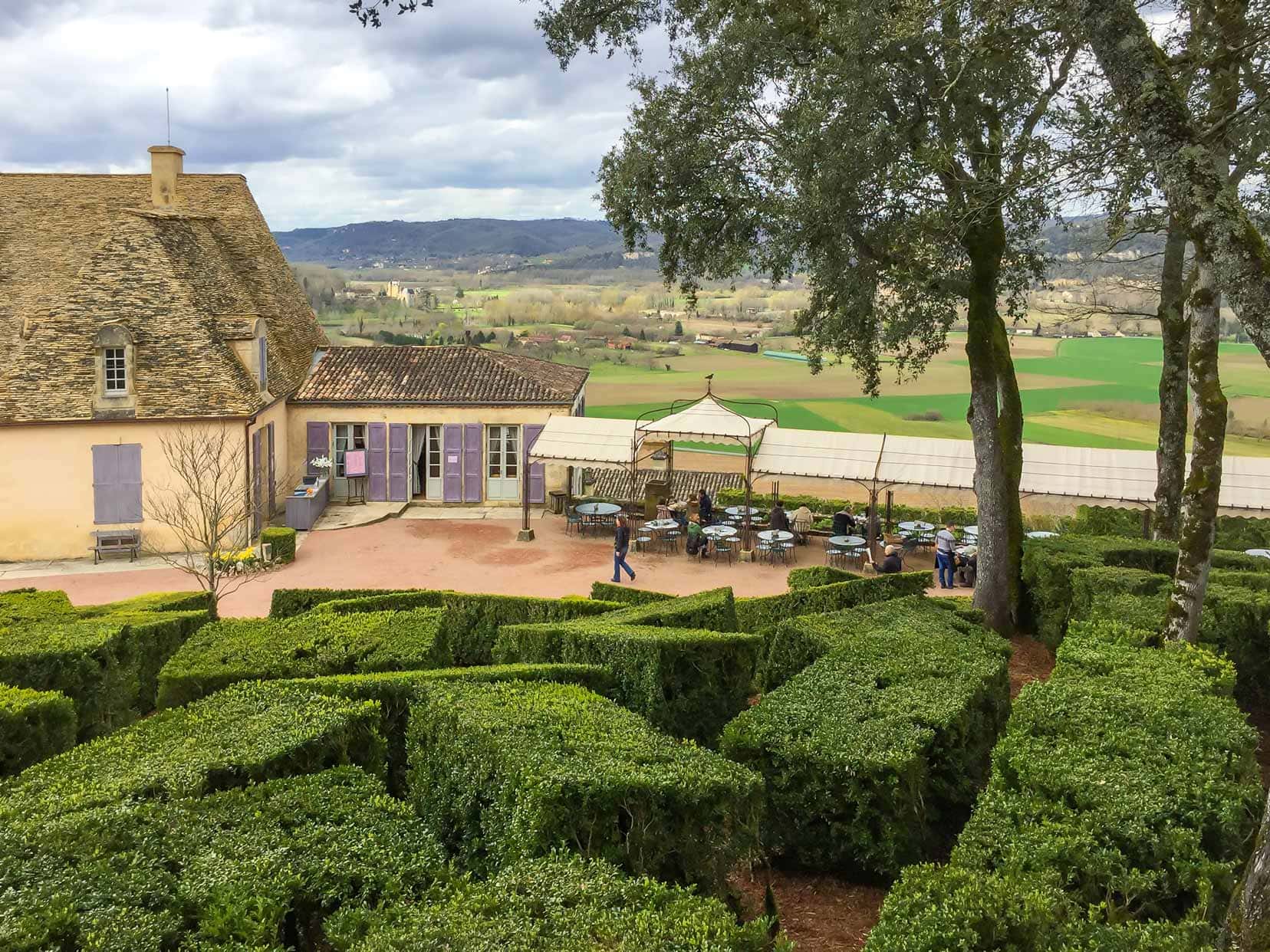
9. Rocamadour
🚗 Driving Distance: La Roque-Gageac to Rocamadour is 55 km or approx. 60 mins.
Rocamadour is a medieval mix of houses, churches, and chapels built into the cliff face above Alzou Canyon. From a distance, it looks like a set for a magical Disney film.
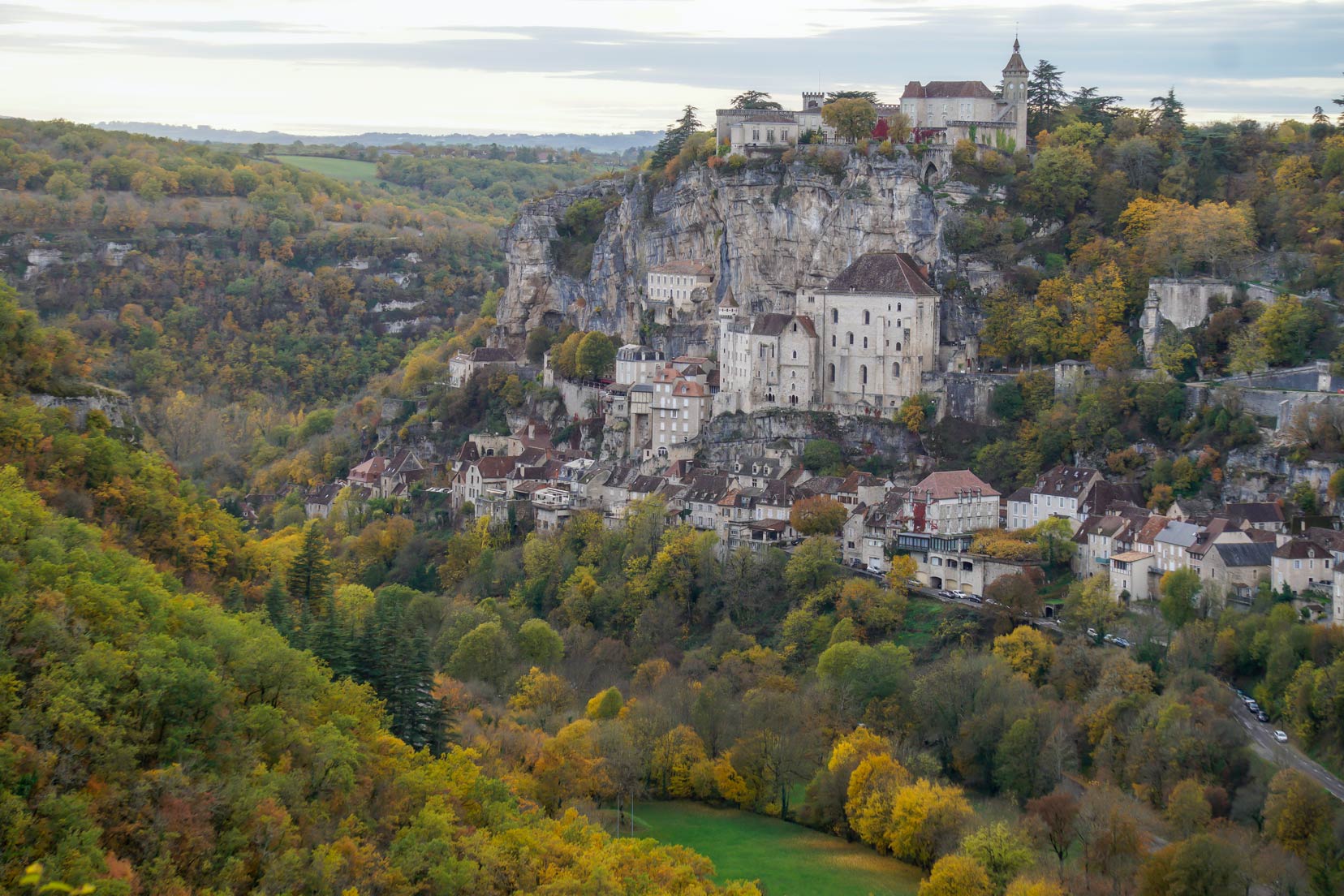
Listed as a UNESCO Heritage site, its ancient, arched gateways lead you onto its one street, Rue de la Couronnerie, and passed olde-world shops and cafes.

You’ll then encounter the numerous steps that bring you to another level, housing eight chapels.
The most famous of which is the Notre Dame Chapel (sometimes known as the Miracles Chapel), which is home to a statue of the Black Virgin dating from the 12th century.
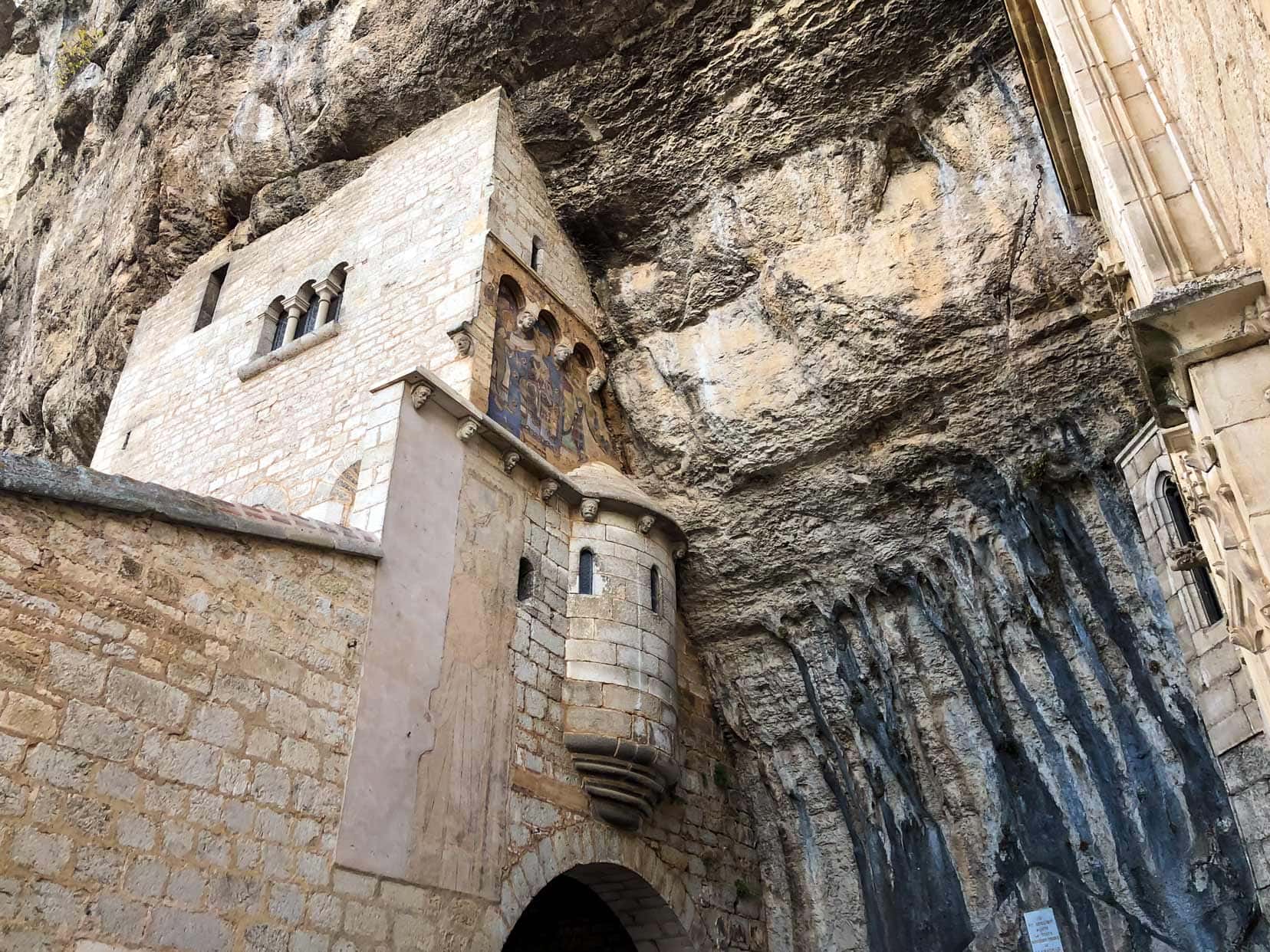
Rocamadour is an important pilgrimage site and in the past centuries, pilgrims arriving here would climb the steps on their knees.
Rocamadour Half-Day Private Tour (from Sarlat)
| ⭐️ 4.9/5 Star Reviews | ⏰ 3.5 to 4.5 hours
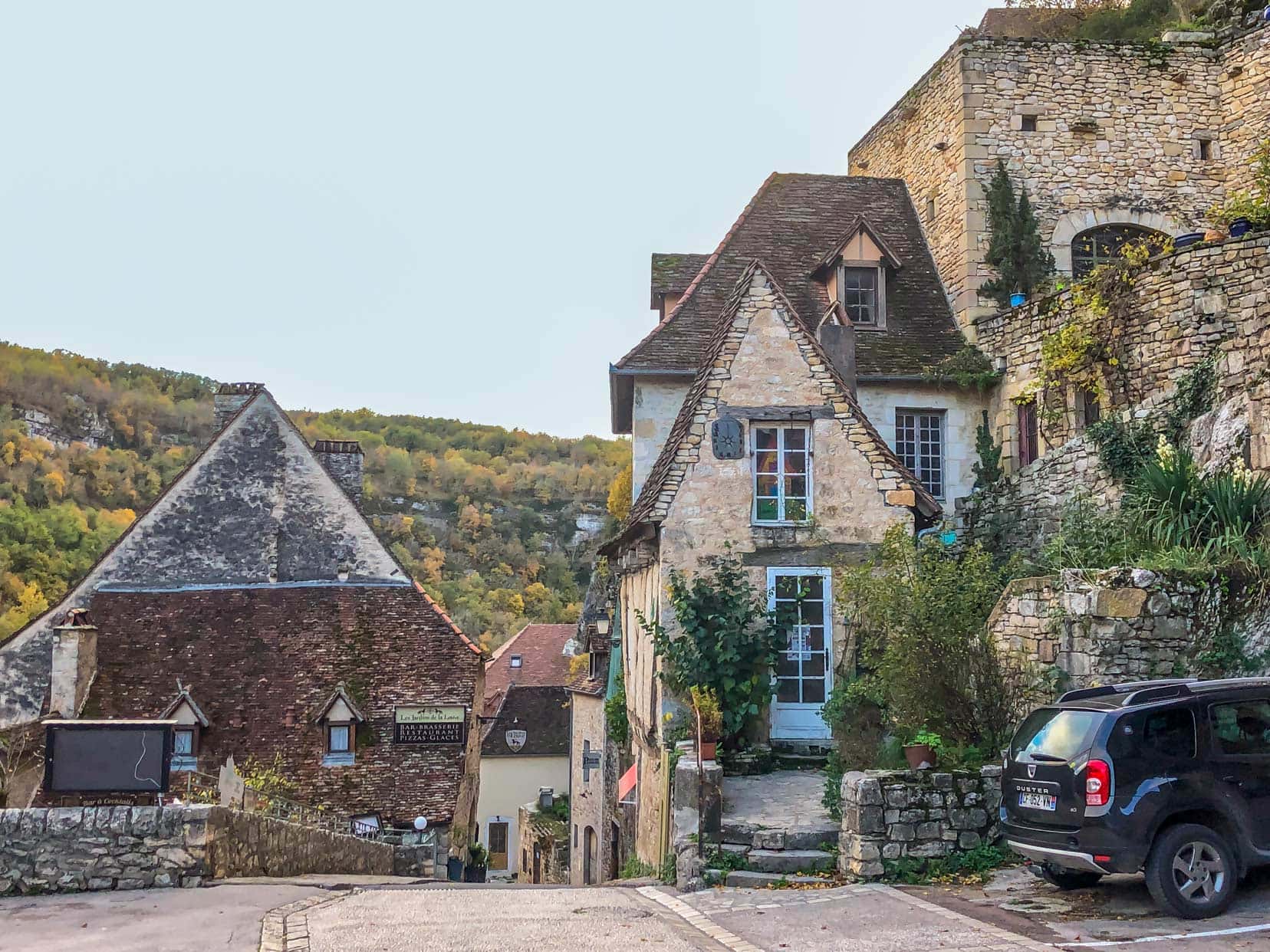
Close to this Dordogne village, you’ll find the Rocamadour Monkey Sanctuary (fôret des singes).
Not, perhaps the place you would expect to find a sanctuary for Barbary Macaques (indigenous to Morocco and Algeria). But here, you can wander alongside these monkeys, which are part of a conservation program to combat the endangerment of the species.

We first met these monkeys when in Morocco when we visited Ouzoud Falls, they were a tourist attraction being exploited – but we weren’t so aware of this until we learnt more through this visit in France.
🎊 What’s On – Rocamadour
- Rocamadour AOC Cheese Festival: Held in June, celebrate the local cheese heritage at this annual festival.
⭐️ Accommodation: Le Terminus des Pèlerins
Rating: Fabulous | Wifi | Town Centre
🦭 Check Rates and Availability

10. Beaulieu-Sur-Dordogne
🚗 Driving Distance: Rocamadour to Beaulieu-Sur-Dordogne is 37 km or approx. 45 mins.
Beaulieu-sur-Dordogne is another charming village in the Dordogne. Since 2021, it has been listed as one of the most beautiful villages in France.
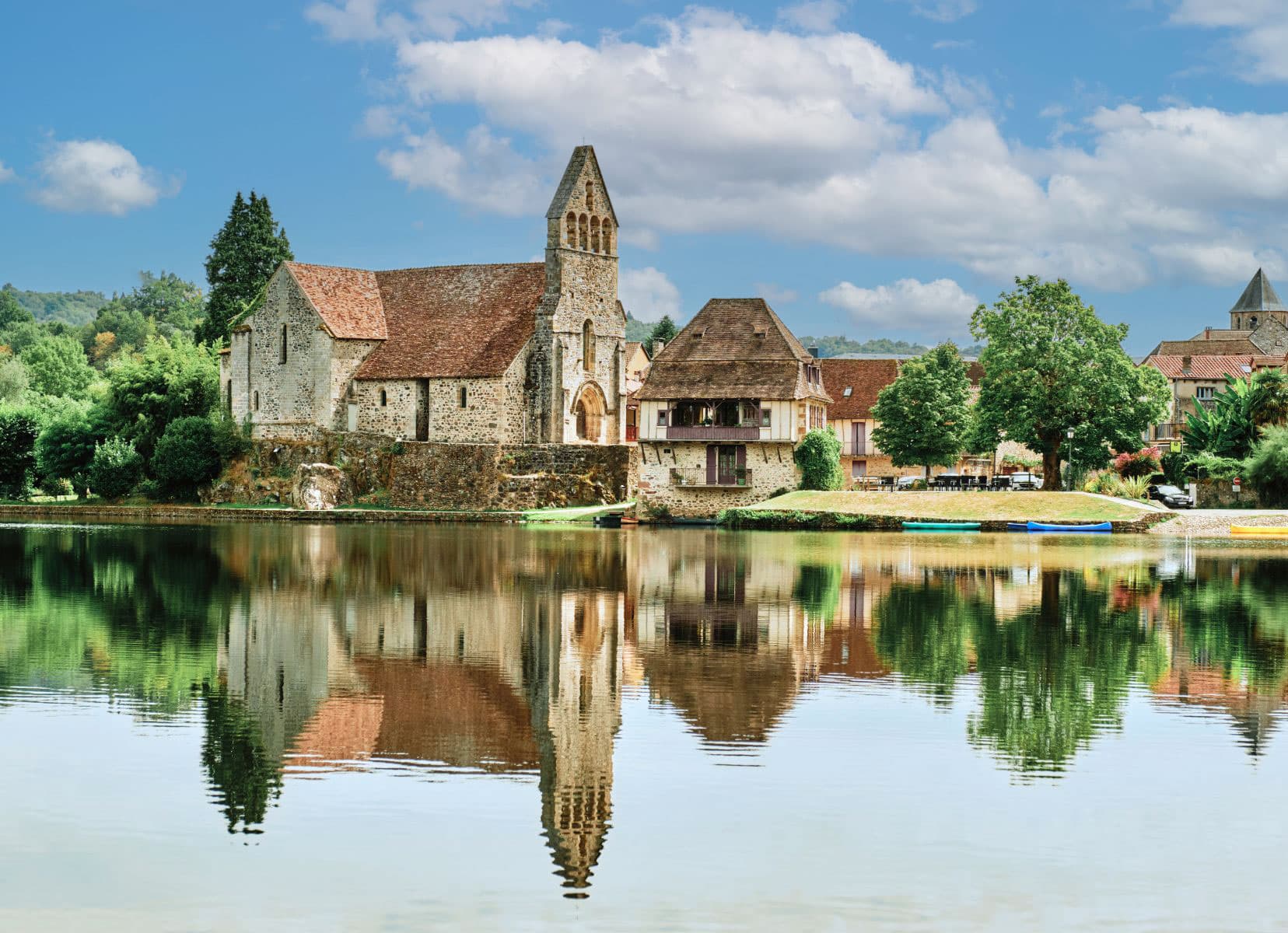
This beautiful part of France is in the Upper Dordogne Valley, on the banks of the Dordogne River. The luscious green banks overlooking the Dordogne are the perfect place to enjoy a picnic or take a canoe and paddle up the river.
In the main square, you’ll find the Abbaye Saint-Pierre.
Once a Benedictine Abbey in the 9th century, the church is most known for its 7-foot stone carving above the door. The carving depicts Christ’s resurrection, with an image of Christ surrounded by the 12 apostles.
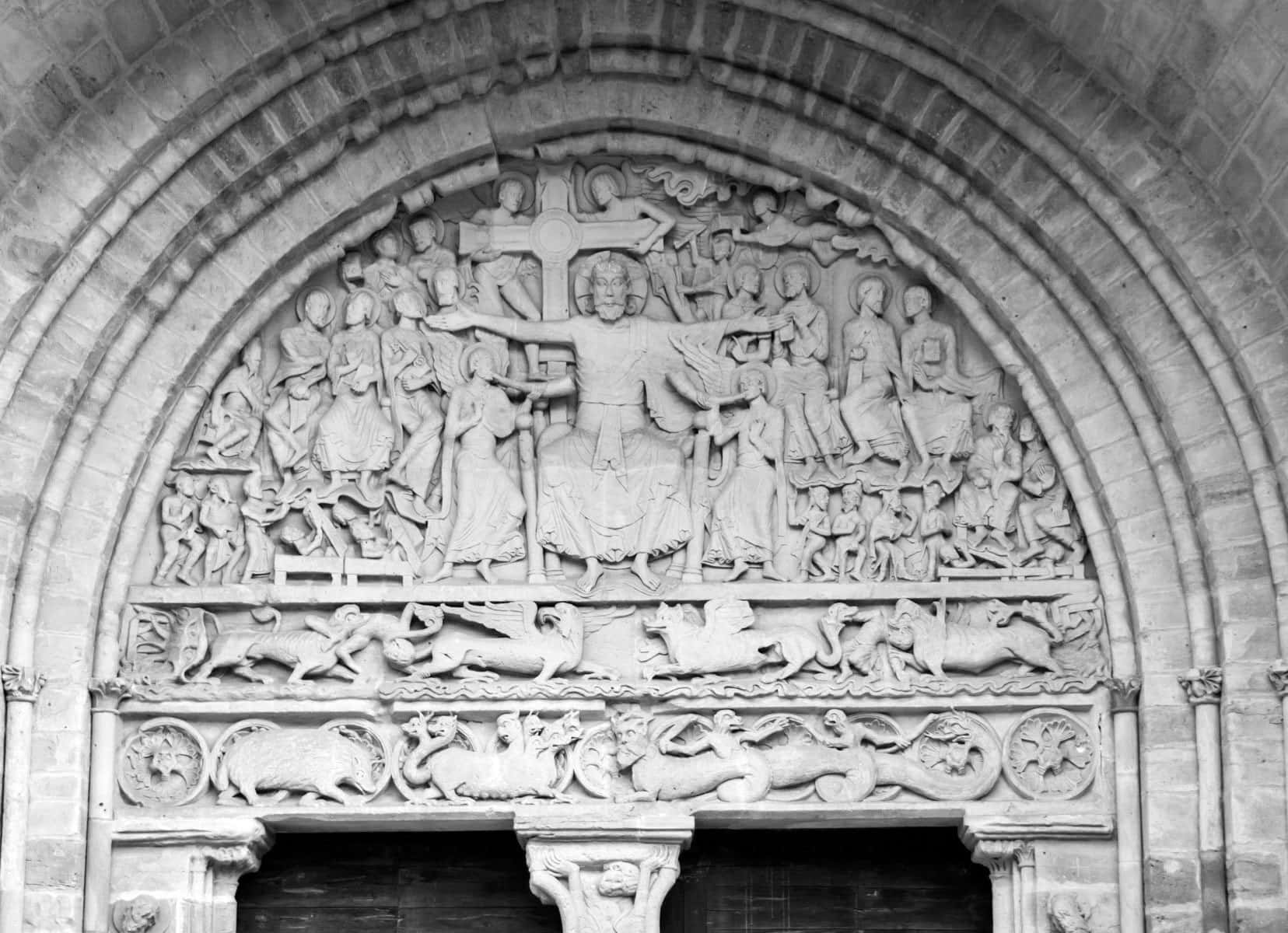
Another attraction of Beaulieu-sur-Dordogne is its strawberries. This region in France produces more than ten different varieties, the most famous of which is the gariguette strawberry, the town’s emblem.
In fact, the village holds an annual Strawberry Festival on the 2nd Sunday of May and produces a massive strawberry tart.
For details of a multi-media tour around the village, visit the Tourist Office at Marbot Place (see map above).
With its enchanting ambience, historical landmarks, and natural beauty, Beaulieu-sur-Dordogne is undoubtedly a delightful village worth visiting in the Dordogne region of France.
🎊 What’s On – Beaulieu-sur-Dordogne
- Strawberry Festival: This takes place on the second Sunday of May each year.
⭐️ Accommodation: Logis Hôtel Le Beaulieu
Rating: Very Good | Breakfast | Town Centre
🦭 Check Rates and Availability
11. Beynac-Et-Cazenac
🚗 Driving Distance: Beaulieu-Sur-Dordogne to Beynac-Et-Cazenac is 78 km or approx. 1 hr 30 mins.
Beynac-et-Cazenac and its imposing medieval castle, Chateau de Beynac, sits on one side of the Dordogne River, while the Chateau de Castelnaud and the Chateau de Feyrac sit on the other.
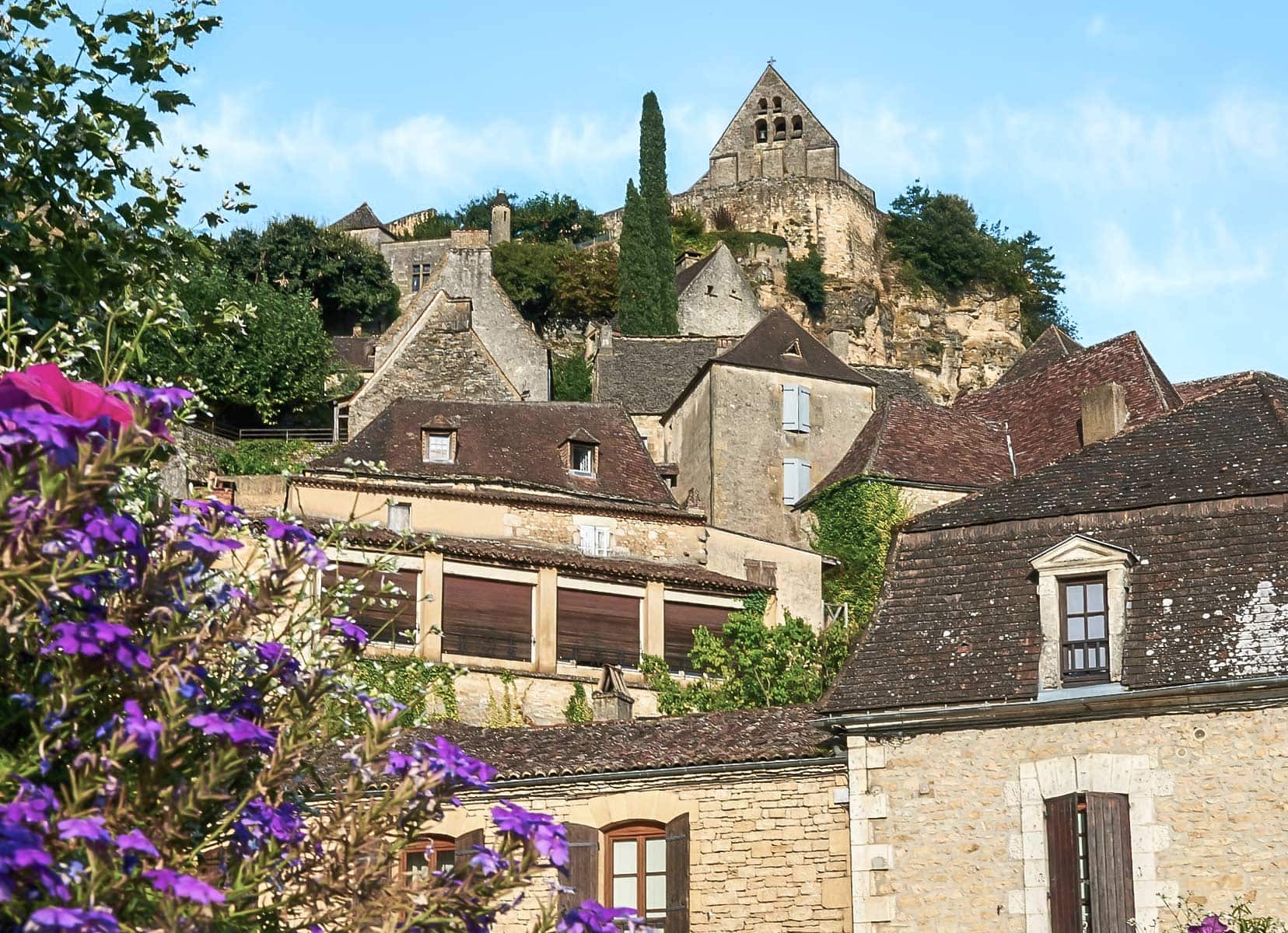
We could see Castle Beynac across the Dordogne River when visiting the Marqueyssac Gardens. Dating back to the 12th century, it is considered one of the most well-preserved and authentic castles in the region.
Richard the Lionheart ( the king of England from 1189 until his death in 1199) conquered the castle by scaling the cliff from below.
Overall, Beynac-et-Cazenac and its neighbouring castles offer a unique glimpse into medieval history and architecture in the heart of the Dordogne region.
🎊 What’s On – Beynac-et-Cazenac
- Weekly Market: A market featuring food and local produce is held every Monday morning from mid-June to mid-September.
⭐️ Accommodation: Hôtel Pontet
Rating: Very Good | Breakfast | Town Centre
🦭 Check Rates and Availability
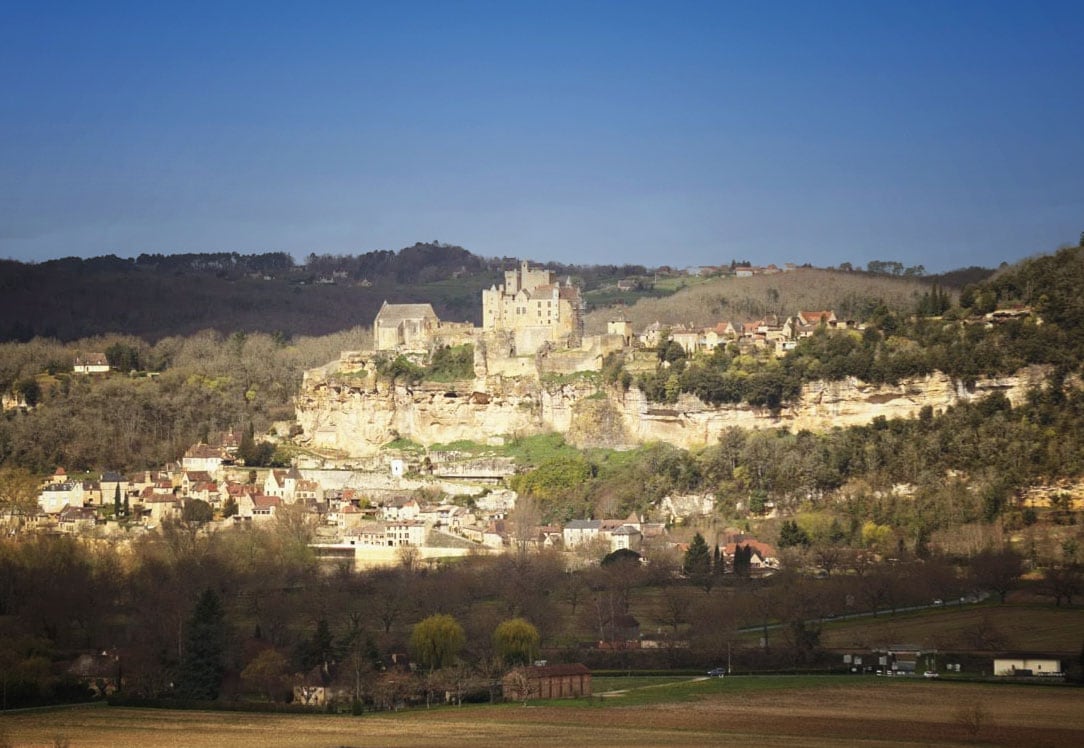
12. Saint-Emilion
🚗 Driving Distance: Beynac-Et-Cazenac to Saint-Emilion is 156 km or approx. 2hrs.
On the far western reaches of the Dordogne, on the northern banks of the Dordogne River is one of the most famous towns in France, Saint-Emilion. If you are a lover of wine, you have no doubt heard of this charming medieval town.

Saint-Emilion is known for its historic architecture, picturesque streets, and world-class vineyards, and is a UNESCO World Heritage site.
The town’s architectural highlights include the Monolithic Church, which was carved out of a limestone cliff in the 12th century, the remains of an ancient Romanesque church and a 53-metre bell tower.
Most of all, though, St-Emilion is known for its prestigious vineyards and for producing some of the finest wines in the Bordeaux region. Wine enthusiasts can explore the numerous chateaux and wineries, participate in tastings, and learn about the winemaking process.
The surrounding area is dotted with vineyards, rolling hills, scenic walking trails and stunning views of the Dordogne River. It’s the perfect place to visit in the Dordogne Valley, especially for wine lovers.
🎊 What’s On – Saint Emilion
- Weekly Market: Held on Wednesdays during the high season at Parc Guadet.
⭐️ Accommodation: Maison De La Tour
Rating: Very Good | Breakfast | Town Centre
🦭 Check Rates and Availability
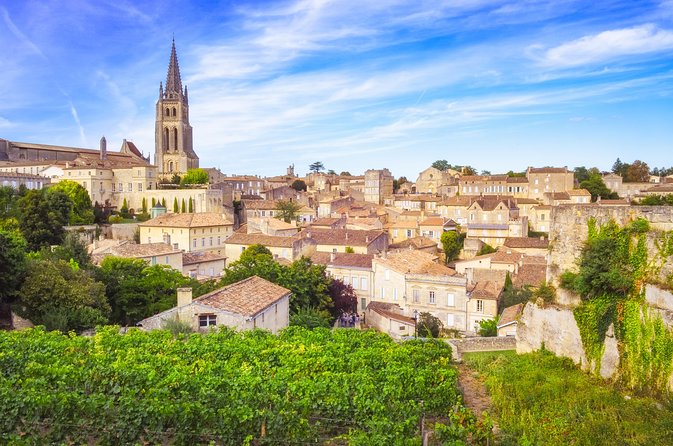
🍷 Saint Emilion Day Trip with Sightseeing & Wine Tastings
⏰ 8 hours | ⭐️ Rating: 5/5 | Book Here
Here are some reviews by visitors who took this tour:
⭐️⭐️⭐️⭐️⭐️ Excellent Guide, Beautiful Scenery, Great Wine – MichaelL_S, June 2023
⭐️⭐️⭐️⭐️⭐️ Highly recommend – even on a rainy day! – Elisabeth_H, June 2023
Where is the Dordogne?
The Dordogne area lies in southwestern France, a region filled with picturesque villages and historic sites. However, pinning down exactly what constitutes the Dordogne can be a bit of a puzzle.
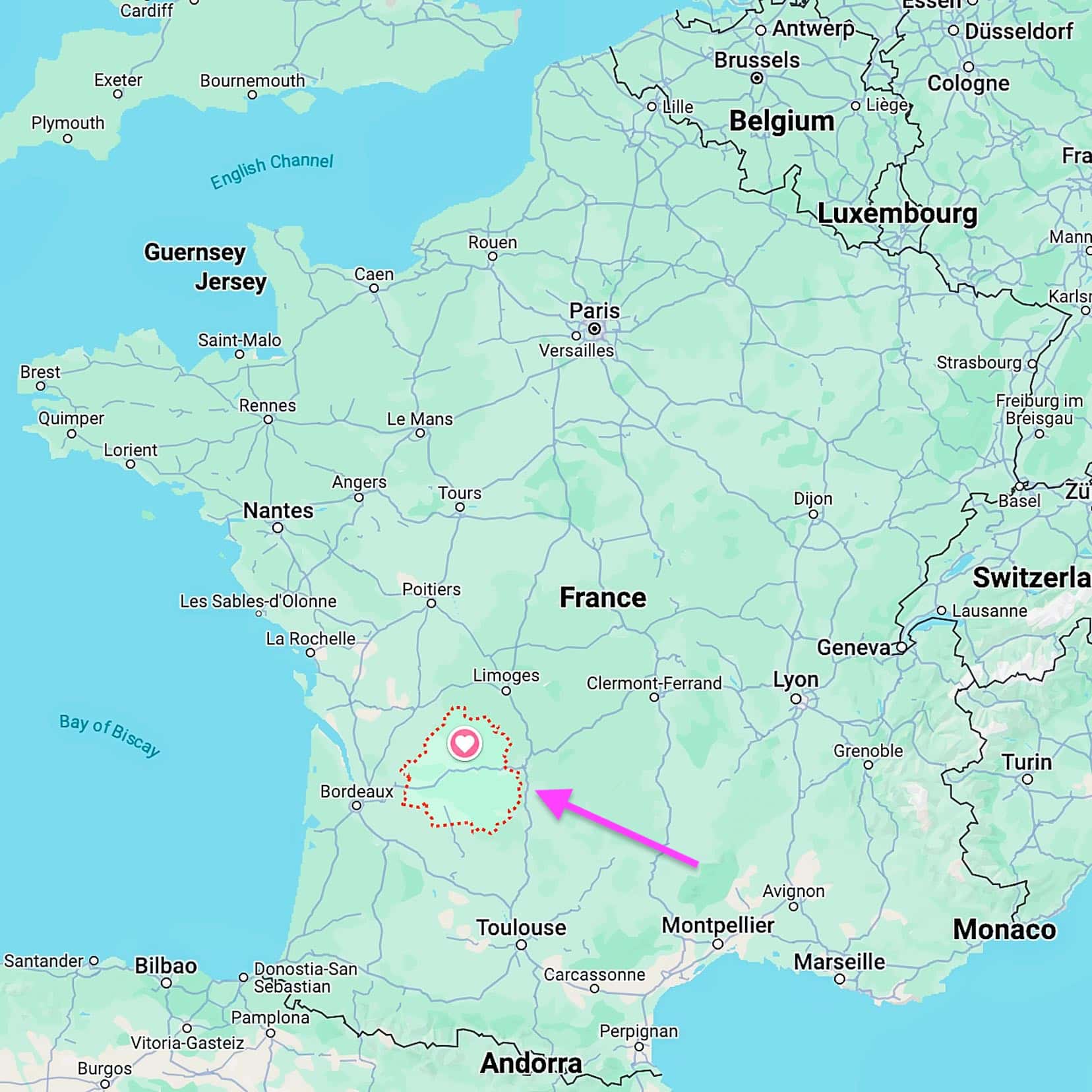
It’s not easy to get your head around the various regions and departments in France, as the old and new names are used interchangeably and can be confusing to a visitor.
The Dordogne Region Explained
To put it as simply as possible, Dordogne villages, towns and cities are found in the Dordogne Department and in the Dordogne Valley (which crosses other departments of France).
What you need to know:
- France’s Regions: Since 2016, France has been grouped into 13 regions. For our adventures through Dordogne villages, we focus on the Nouvelle-Aquitaine region.
- Dordogne Department: This is one of the twelve departments within Nouvelle-Aquitaine. It sounds straightforward, but here’s where it gets a tad tricky.
Why it’s confusing:
- Not Just One Place: Although they’re called “Dordogne villages,” not all are in the Dordogne Department. They get their name from the Dordogne River, which doesn’t stick to one department’s boundaries.
- Beyond Boundaries: The river flows through other regions, including Occitanie. Thus, some so-called Dordogne villages are not in Nouvelle-Aquitaine at all.
A humorous note on bureaucracy: Every region is sliced into departments, which are then diced into arrondissements, cantons, communes, and for an extra sprinkle of fun, prefectures and subprefectures. Thankfully, we don’t need to dive into that bureaucratic salad to enjoy the charm of Dordogne villages!
In simpler terms: If someone mentions a Dordogne village, it might not actually be in the Dordogne Department. These villages are scattered along the path of the Dordogne River, crossing different administrative lines and regions.
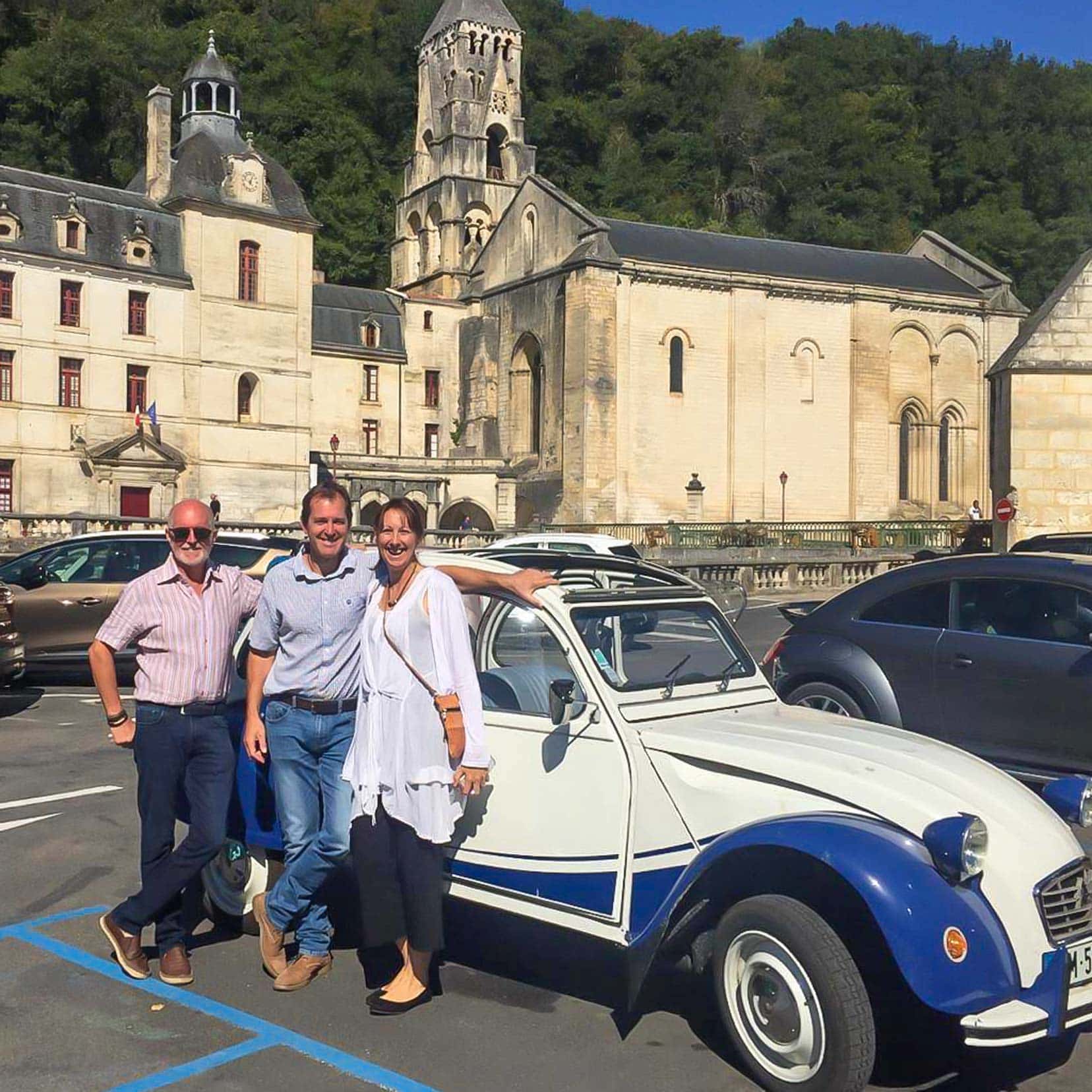
So, are you staying in a Dordogne Village or not?
It’s mostly a matter of semantics, and regardless of the official boundaries, the area surrounding the Dordogne River is stunning and well worth exploring.
Dordogne or Périgord?
Historically, the Dordogne was known as Périgord. Today, locals around the capital, Périgueux, still use ‘le Périgord’ to refer to their region.
Divisions within Périgord:
- Périgord Vert (Green): Known for its lush landscapes, centred around Nontron.
- Périgord Blanc (White): Named for its limestone plateaus, with Périgueux at its heart.
- Périgord Noir (Black): Famous for its dark oak forests, anchored by Sarlat.
- Périgord Pourpre (Purple): Celebrated for its wine, with Bergerac as its capital.
This four-part division not only highlights the region’s natural diversity but also underscores the cultural depth that the name Périgord conjures. Each sector offers a distinct slice of the area’s rich heritage, making the Dordogne one of France’s most fascinating regions to discover.
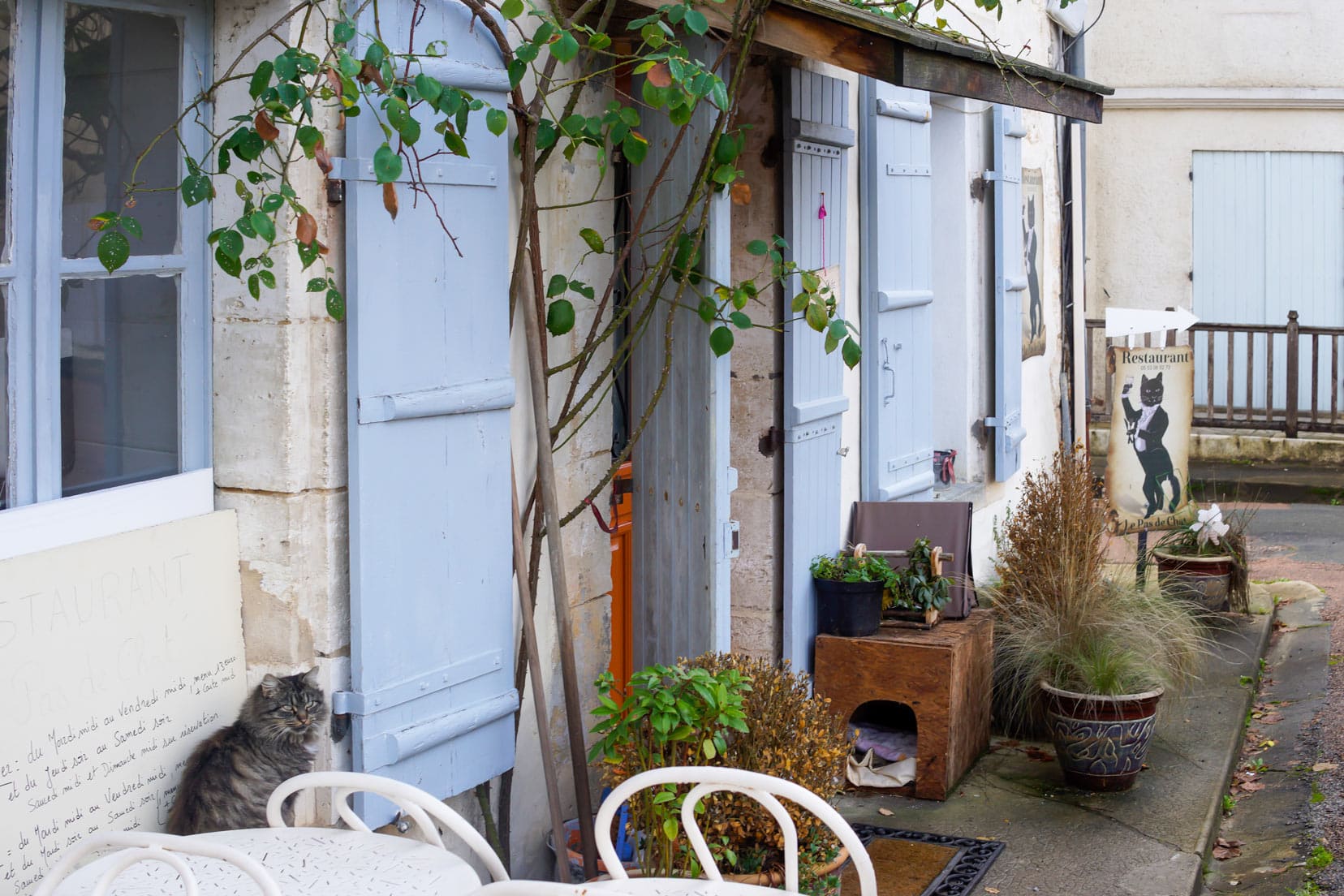
When is the Best Time to Visit the Dordogne?
To experience the Dordogne at its finest, consider visiting during:
- Spring (April to June):
- Enjoy mild temperatures.
- See the countryside burst into vibrant blooms.
- Benefit from fewer tourists.
- Autumn (September to November):
- Experience comfortable weather.
- Witness the stunning autumn foliage.
- Attend local harvest festivals.
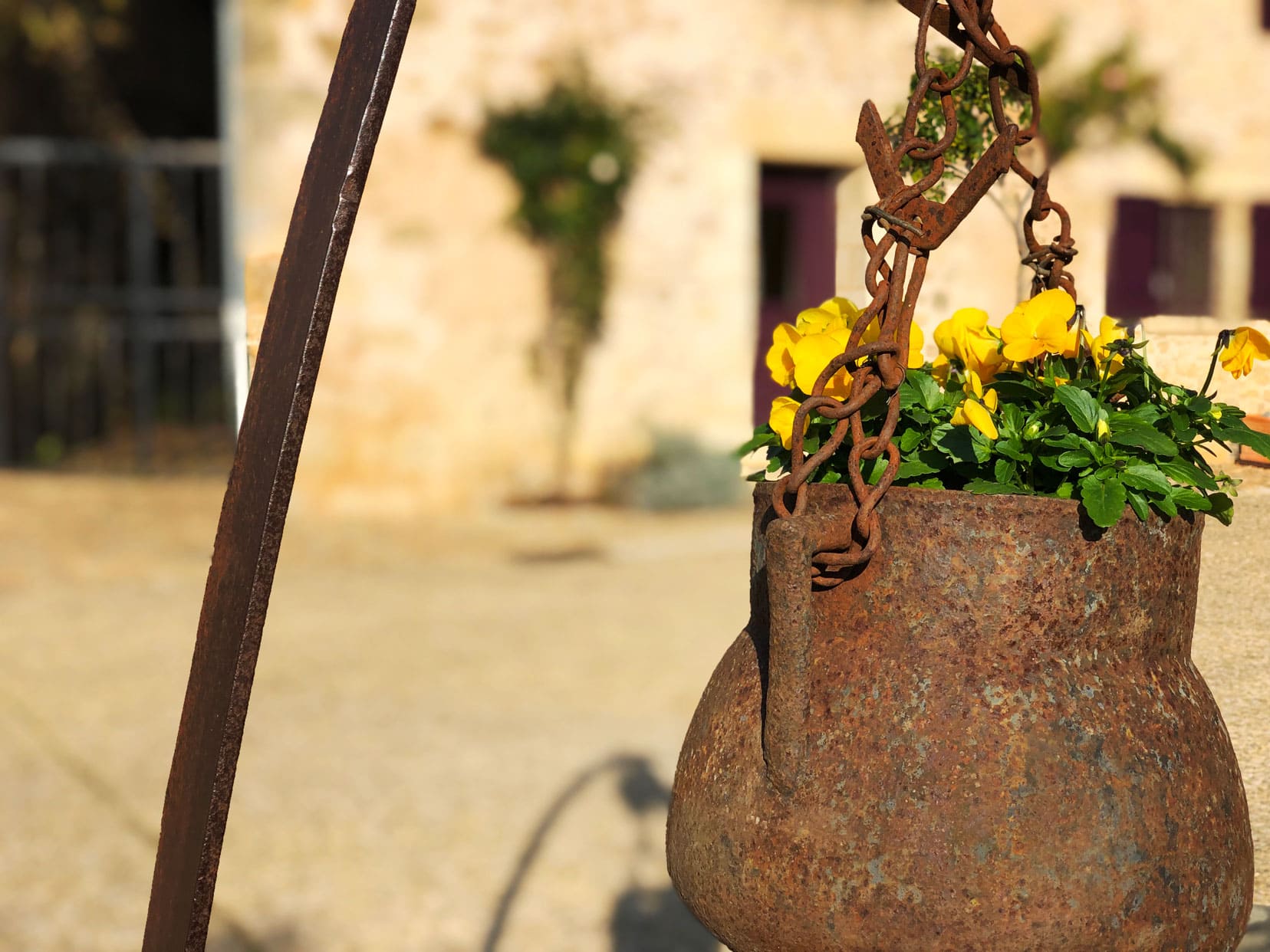
Dordogne Towns and Villages FAQs
1. What is the prettiest village in the Dordogne?
The prettiest village in the Dordogne has many contenders. However, the most popular and picturesque villages in the Dordogne include Sarlat-la-Canéda, Domme, Roque Gageac, Brantôme, Rocamadour, and St-Jean-de-Côle.
2. What is the most beautiful part of the Dordogne?
The Dordogne region in France is known for its stunning landscapes, charming villages full of beautiful stone houses, and rich historical heritage. It is difficult to single out one specific part as the most beautiful. Still, some of the most popular and visually appealing areas in the Dordogne include those in the Dordogne Valley. Specific towns and villages include Sarlat-la-Canéda, Domme, Roque Gageac, Brantôme, Rocamadour, Beynac-et-Cazenac, and St-Jean-de-Côle.
3. What is the main town in the Dordogne?
The main town in the Dordogne region in France is Périgueux, the capital of the Dordogne.
4. What is the best base for the Dordogne?
The best base for exploring the Dordogne region in France depends on personal preferences and the specific attractions or activities you plan to do. However, Sarlat-la-Canéda is often considered one of the most popular and convenient bases because it is centrally located.
Visiting Dordogne Villages … That’s a Wrap
The Dordogne villages offer a relaxed pace of life that epitomizes the essence of rural France at its most quintessential. Among the beautiful towns in the Dordogne, each one we’ve featured stands out as a true gem.
Allow yourself to be captivated by each village’s unique charm, rich history, and breathtaking beauty. An unforgettable experience awaits you in the Dordogne villages, where every visit leaves a lasting impression.
If you enjoy exploring the Dordogne, you might also love our road trip guide through Alsace, another region rich in history and natural beauty.
Have you visited any of the Dordogne villages, or is there a village in France that has captured your heart ?
Share your stories with us in the comments below!
Pin and Save for Later
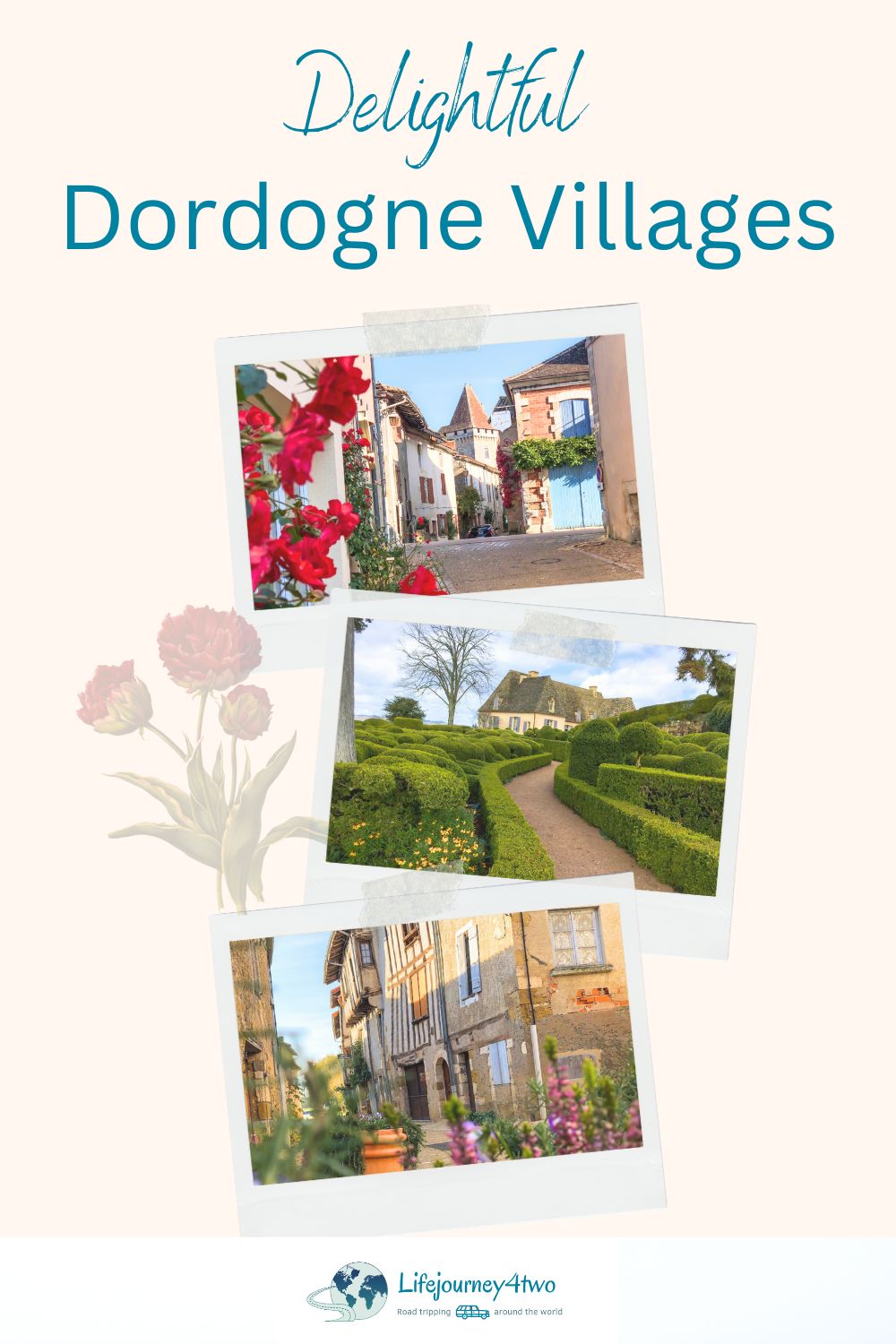
Planning Your Travels to France?
These are the travel resources we recommend and use when planning our trips.
- 🚘 Car Hire: We use DiscoverCars.com
- Motorhome/Campervan Rental: We highly recommend the Motorhome Republic
- 🪪 Order your International Driver’s Licence online here
- 🛏 Book Accommodation: We use Booking.com to find accommodation that suits our budget
- 🐶 Pet Sitting/Pet Sitters: Check Out TrustedHousesitters here (Use our Discount code: LIFEJOURNEY25 for 25% off. )
- Activities and Experiences: Get Your Guide and Viator
- Travel Insurance: Safetywing or World Nomads
- 🥾 Travel Gear and Accessories: Check out our top picks here — Lifejourney4two page on Amazon
For a more thorough list, visit our Travel Resources page here.

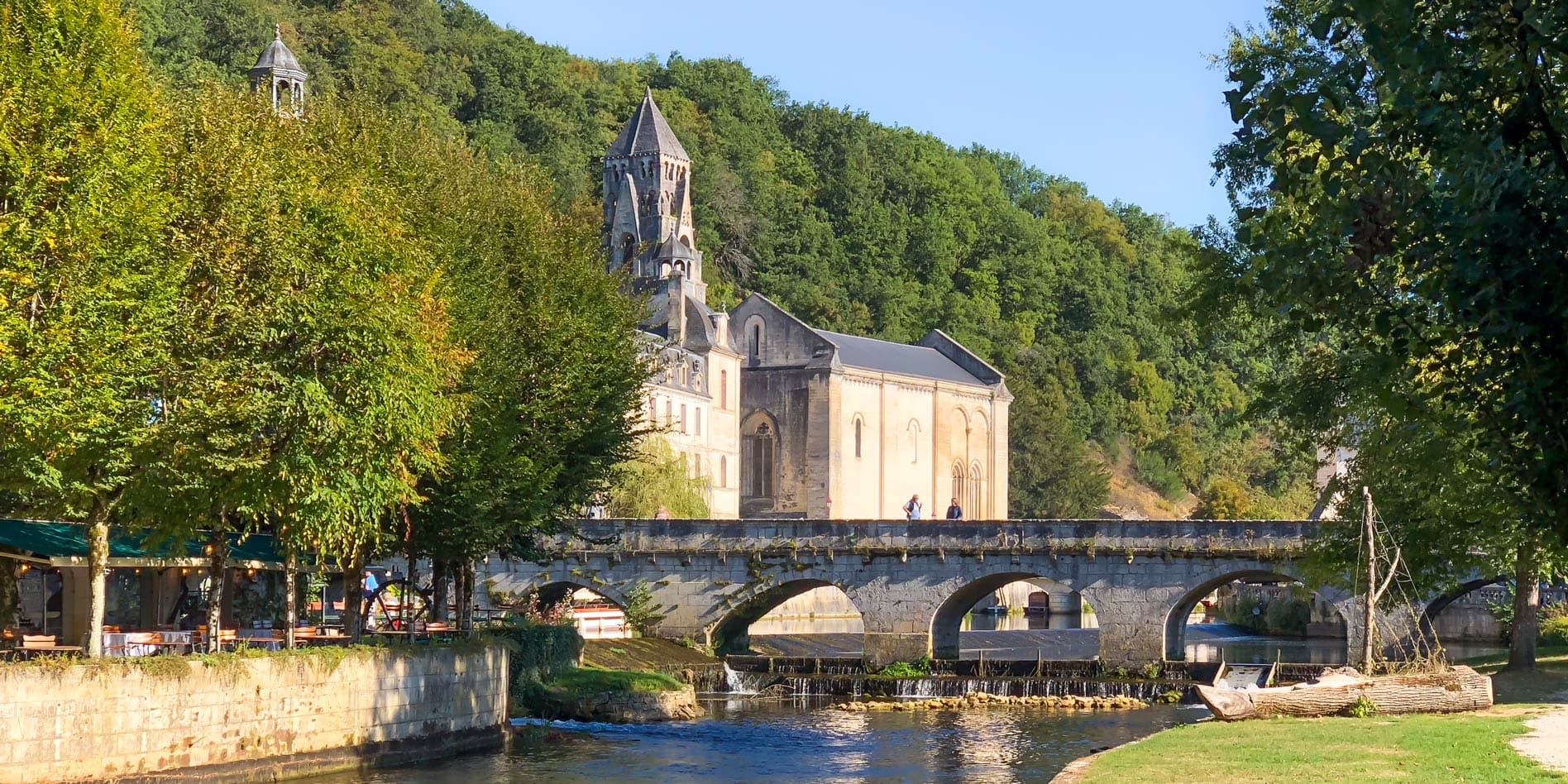
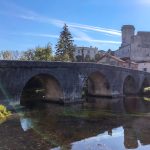
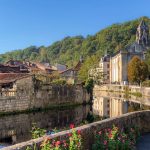

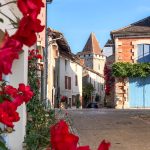
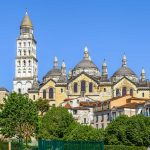
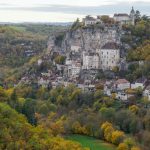
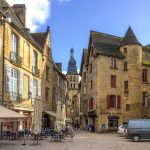
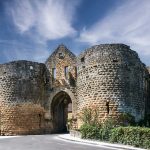
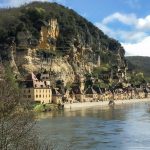
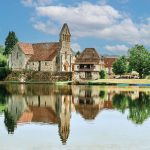

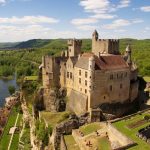
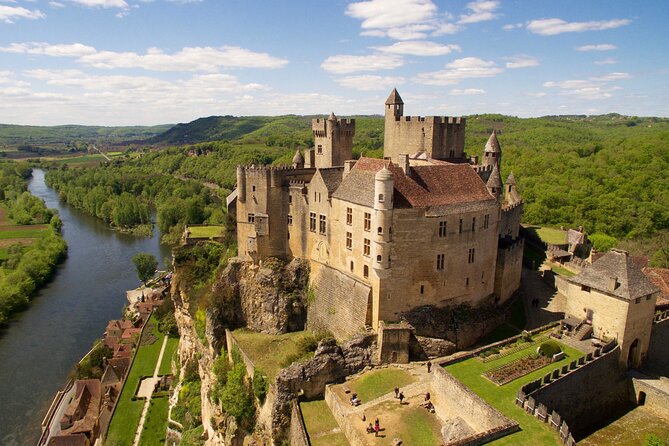
Hi you’ve given us lots of inspiration to go to the Dordogne region! We’d like to travel with our dogs in our motorhome rather than hotels/B and B. The motorhome is 8.1 metres so not good for tiny French roads, we’d hire or take a car to travel round. Are there any campsites you’d recommend to base ourselves in to travel around the region? Thanks
We travelled at first with our motorhome and then with our car when we were living in the area – there are so many campsites in the area – here is a link to Camper Contact for recent reviews, prices and details 🙂 Dordogne stops
Hi Shelley and Lars.
The Dordogne has been on the bucket list to revisit, since we were there in 1978! We are both now 77, moderately healthy, wanting to walk where its not to long and not too steep! Looked at walking tours but a bit much of both.
We are now wondering about basing ourselves in maybe 4 villages over 2-2 1/2 weeks, 4 nights in each, and not hiring a car. Trains are good! We want the French village ambience and cuisine, but not 5* or Michelin. Very happy with gites.
Can you pick 4 of your special villages that would fit the scenario? Would like Brantome, as we used to live in Brantome St Gisborne, and it looks lovely[as they all do! ] Went to Rocadamour previously. Loved Sarlat, and would happily return.
Looking to travel mid April-early-mid May, so flower festival at St Jean de Cole appeals.
How easy is it to travel between the villages without a car? Are there buses, or would one need taxis? Could finish up where there is access to a train back to Paris to fly home.
Sorry to be cheeky in asking advice, but I’m sure your knowledge is better than a Melbourne travel agent. However I fully understand if you can’t help; but thank you so much for the wonderful , informative and oh-so-tempting web site!
Cheers, David Laurie
Hi David and Susie- so pleased you love our website! And a trip to the Dordogne in spring sounds lovely.
Our favourite town in the Dordogne was Brantome, so I’d say definitely include that one and another of our favourites was Sarlat. My friend in Villars absolutely loved Perigeux (I don’t think we explored it enough to fall in love with it – much to the chagrine of my friend!). And there are better rail links there I think.
To be honest, I’m not sure about public transport between the villages – we had a car so travelled that way everywhere, but I’m thinking that it would be more difficult to get to say the smaller towns of St. John de Cole than to the larger, like Sarlat.
As for the other villages to pick – that’s a hard one as there are so many. If you are wanting a wider choice of restaurants then the larger villages will be a better choice. So Brantome, Perigeux and Sarlat would be great options and then another that catches your eye 🙂
I hope this helps a little and do let us know how your trip goes and let us know your favourite parts.
Happy travels.
Shelley and Lars
This is beautiful. It looks straight out of fairytales & picture postcards!
I guess that’s why the Dordogne is so popular – such beautiful scenery and villages 🙂